




The Reliable Model KFR-CCS Sprinkler is designed for the protection of specific light hazard combustible and noncombustible concealed spaces requiring sprinkler protection. Its high, flat spray pattern provides ideal coverage of these spaces and its rugged 212° F fusible link design requires no shipping protector. The KFR-CCS is suitable for installation with CPVC pipe (wet systems) or steel pipe (wet, dry or preaction systems).
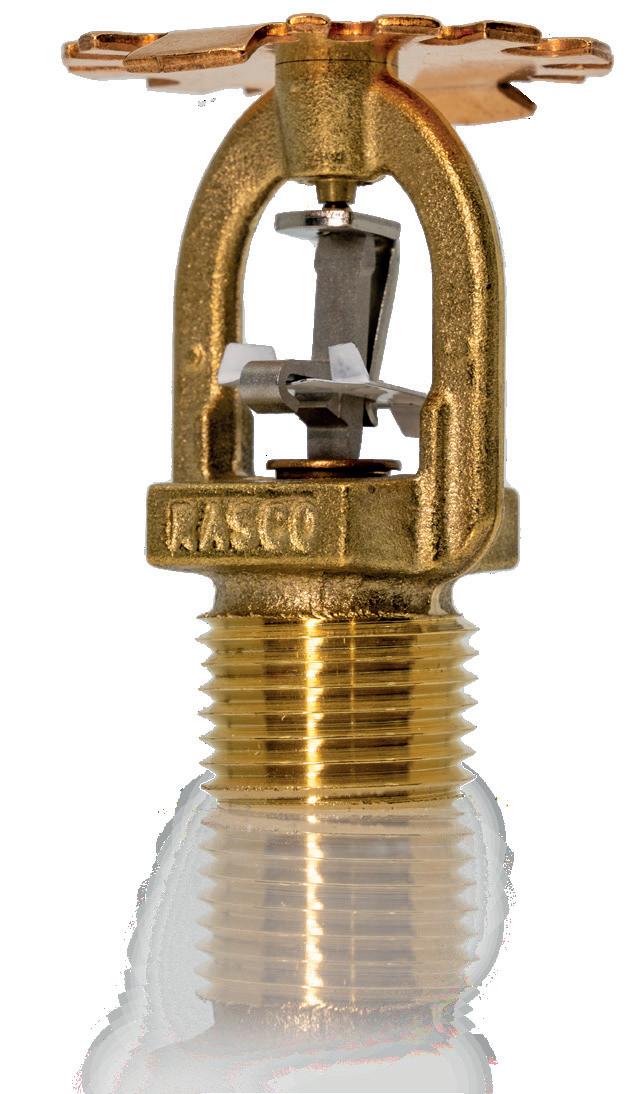
The KFR-CCS recently received an enhanced cULus Listing:
• Protection of concealed spaces with trusses without requiring draft curtains.
• Protection of concealed spaces with trusses up to 60 inches in height.
• Maximum sprinkler spacing up to 16 feet in concealed spaces with trusses or noncombustible insulation-filled joists.

• Matches industry leading hydraulic requirements for wet systems.
Assembled & Rigorously Tested in Liberty, SC
Proper sprinkler application made easier with designer-friendly bulletin 044.
reliablesprinkler.com/ccs


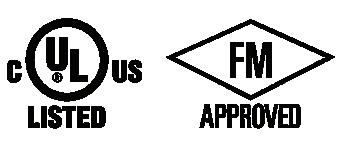




SPRINKLER AGE, (ISSN 0896-2685) is published bimonthly for $33.95 per year by the American Fire Sprinkler Association, Inc., 1410 East Renner Road, Suite 150, Richardson, Texas 75082. Periodicals postage paid at Dallas, Texas and additional mailing offices.

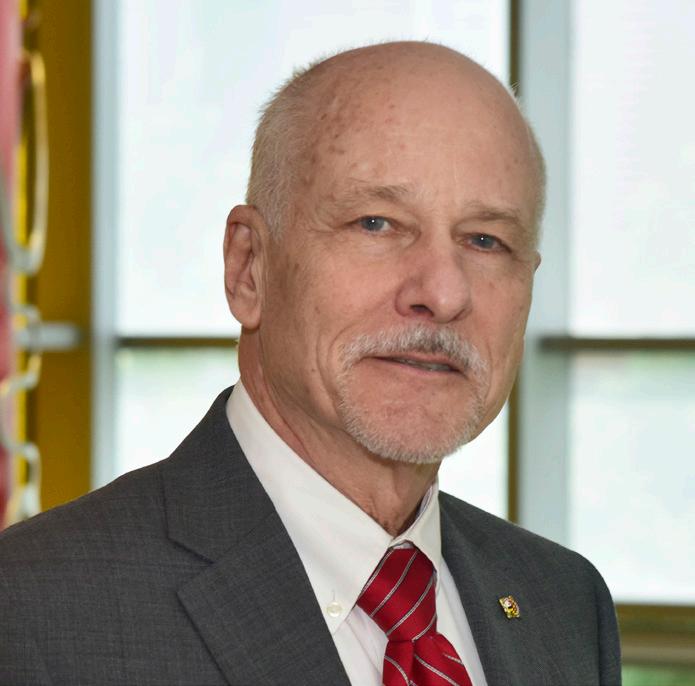


Welcome to AFSA42!!! There has been a tremendous amount of preparation by AFSA42 Convention Committee Chair Chris Johnson, Piper Fire Protection, Inc.; his entire Convention Committee; and, of course, AFSA staff led by Marlene Garrett, AFSA’s convention chief in charge! I hope everyone takes advantage of the seminars, networking meals, and all the magic surrounding us in Orlando! Solidifying your network by visiting with old friends and making new ones should be a goal you set for yourself. This is the greatest benefit of attending AFSA’s conventions and exhibitions. Make sure you also attend the general session. There will be patriotism, association/industry updates, and plenty of awards—all mixed in with a bit of magic and fun!
One of the awards being handed out will be AFSA’s highest honor, the Henry S. Parmelee Award. This award is given in recognition of an outstanding individual dedicated to the professional advancement of the fire sprinkler industry and fire safety through the use of automatic fire sprinklers. The Board of Directors considered this year’s nominations at its July Board Meeting. This year’s recipient is Dr. James A. Milke, Ph.D., P.E., FSFPE, from the University of Maryland’s Fire Protection Engineering (FPE) Department. I have known Jim for many years, too many to count. We started as friends, golf buddies (that didn’t go so well), professor/student, and ultimately as a mentor of mine as I watched him progress through the ranks of the FPE department all the way to becoming its director in 2011. Jim follows in the footsteps of many tremendous past winners of this award, including the 1991 recipient Dr. John L. “Prof” Bryan, the founder of the FPE department at Maryland. Prof was all of our mentors, including Jim’s. I was worried when Prof retired. I was concerned whether there could ever be someone to take over the department in that same humble, mentoring way that Prof did … then came Jim. Please read the article on Jim featured in this issue to learn about all of his accomplishments, including the work he has done advocating and proving the life safety benefits of the automatic fire sprinkler. It will be my greatest honor to present Jim with this award during the general session Friday afternoon at AFSA42.
At the conclusion of AFSA42, my term as Chair of this tremendous association will come to a close. The two years have gone by faster than I ever could have imagined. I’ve loved this association since first getting involved with it in 1989 and have continued to love it even more as the years have gone by. I will serve my next two-year term as Past Chair before retiring from the AFSA Board at that time, so you’re not totally getting rid of me quite yet. The Board of Directors (past and present), committee members, and all other volunteers have made this association the best industry association in the country! Thank you for all of your efforts. It would be a shame if I didn’t mention the outstanding staff we have within AFSA in Dallas. They work tirelessly each and every day with the sole purpose of making you and your company better. As each one of us improves, our entire industry improves as well. That is the goal of AFSA!
They say we receive more in giving than the actual act of receiving itself, and how true that has been for me. I have been honored to serve you as your Chair and will continue to serve you always in any way that I can. THANK YOU!! May God continue to watch over this association today and for many years to come. May He also bless you and your companies always and in all ways. n
EDITORIAL: 214-349-5965
BOB CAPUTO, CFPS, Publisher, ext. 124 bcaputo@firesprinkler.org
D’ARCY G. MONTALVO, Editor, ext. 115 dmontalvo@firesprinkler.org
ADVERTISING: 214-349-5965
SYDNEY RICHARDSON, Communications Specialist, ext. 134 srichardson@firesprinkler.org
CIRCULATION: 214-349-5965
D’ARCY G. MONTALVO, Editor, ext. 115 dmontalvo@firesprinkler.org
AFSA BOARD OF DIRECTORS
JACK A. MEDOVICH, P.E., Chair, 804-222-1381
LINDA M. BIERNACKI, First Vice Chair, 318-841-0330
PAUL DELORIE, Second Vice Chair, 603-432-8221
ROD DIBONA, Treasurer, 605-348-2342
JEFF PHIFER, Secretary, 803-438-2994
TED WILLS, Immediate Past Chair, 610-754-7836
LYLE HALL, 858-513-4949
CHRIS JOHNSON, 727-581-9339
R. DONALD (DON) KAUFMAN, 505-884-2447
MICHAEL F. MEEHAN, 804-459-2200
E. PARKS MOORE, P.E., 251-473-6000
JAY STRICKLAND, 301-474-1136
WAYNE WEISZ, 209-334-9119

BOB CAPUTO, CFPS, President, ext. 124
JOHN AUGUST DENHARDT, P.E., FSFPE, Vice President, Engineering & Technical Services, ext.121

MARLENE M. GARRETT, CMP, Vice President, Meeting & Education Services, ext. 118
MEDA MERRITT, Senior Director, Membership Services & Chapter Support, ext. 133
MELISSA ATHENS, Director, Finance & Administration, ext. 112
LESLIE CLOUNTS, Director, Education Services, ext. 130
ROGER GRAGG, Director, Marketing & Information Technology, ext. 116
Sprinkler Age is devoted to the professional development of the fire sprinkler industry. Deadline is 1st of the month preceding publication.
Published by American Fire Sprinkler Association, 1410 East Renner Road, Suite 150, Richardson, TX 75082. Call (214) 349-5965, FAX (214) 343-8898, or email sprinklerage@firesprinkler.org for information.
Copyright © American Fire Sprinkler Association, Inc. All rights reserved. PRINTED IN USA. Unless expressly stated otherwise, all editorial and advertising material published is the opinion of the respective authors and/or companies involved and should not be construed as official action by or approved by Publisher or the Association.
Sprinkler Age is a membership benefit, provided free of charge to AFSA members. For information on non-member and/or foreign subscription rates, call (214) 349-5965.
AFSA annual membership dues are a sliding scale for Contractors and Associates and a flat fee for Authorities Having Jurisdiction. (Members receive a free subscription to Sprinkler Age.) Write or call AFSA for membership information. See AFSA’s website at firesprinkler.org.



This issue of Sprinkler Age magazine is the convention issue, so let me join our Board Chair in welcoming everyone attending AFSA42 to Orlando. Our Board of Directors and AFSA staff have prepared another amazing schedule of events at an incredible location. This convention continues to be the largest fire sprinkler event in the world and this year we have sold out the exhibit hall. That is a very encouraging trend for our industry because it shows that we really are breaking free of the COVID-19 pandemic’s impact on our daily lives and the growth and interest in AFSA’s development and programs.
One thing I know for sure is that being a first-time attendee of a function celebrating 42 years can seem daunting at best. To make new attendees feel more comfortable, we will be hosting a short cocktail hour for first-timers and their guests. (Please check your registration packets for time and location.) In addition, first-time attendees will be identified by a badge ribbon so if returning attendees see one, please reach out to make them feel more welcome. Share the secret handshakes and show off AFSA’s “We’re all in it together!” spirit.
I am proud to report on the progress AFSA staff continues to deliver for our members and our industry. Under the leadership of John Denhardt, P.E. (and a bunch of other letters after his name), our technical services department has grown exponentially along with AFSA’s positive reputation across the industry. Technical Reviews (formerly Informal interpretations) of codes and standards continue to be turned around in one day, helping our contractor and AHJ members resolve issues together for the benefit of projects in every stage of work. Our technical services team is working with members and committees to develop new training materials and update existing programs, webinars, and reference materials. Our project list continues to grow as members and chapters provide feedback on the trends and needs for training, recruiting, and retaining the workforce needed to grow our business and our industry. Our team of subject matter experts includes Kevin Hall, Josh McDonald, Eric Andresen, Veronica Westfall, and Victoria Valentine. When you see them during the convention, be sure to ask them your burning questions.
In addition, our administrative support team is also knocking it out of the park behind the scenes. Linda Wee, Maricarmen Martinez, and Christina Sales keep the flow with support of seminars, webinars, and training to ensure attendees have room, food, and drink, in addition to CEUs and records of training. With Leslie Clounts and Marlene Garrett leading training programs and meetings/convention, we continue to deliver better and better experiences for your needs.
Membership and Chapter Development is a huge focus for this team, and the return of Meda Merritt has already shown a return with increased membership and retention numbers. Dominick Kasmauskas is working as hard as his name is to spell. He puts more miles on his car each month visiting members than I put on my truck each year. Our focus moving forward is chapter support, especially for those chapters where activities have fallen off a bit. If you’re not hearing from us, we want to hear from you! After all, you are the reason we’re here.
Our marketing team and especially the work that goes into publishing this magazine in print and electronic formats also deserve
kudos. Roger Gragg and his team with Josh Fisher, D’Arcy Montalvo, and Sydney Richardson are doing a great job of increasing our social media presence as well as making our direct contacts with membership a better engagement experience. In fact, we’ve onboarded a new software program just for that purpose.
We all know the competition for workers in the construction trades continues to be fierce, and we appear to be coming up short in appealing to candidates over other construction trades. We need to change that equation locally and nationally. We cannot do what we’ve always done and expect better results. Let’s get together and see how we can better retain our industry’s best and brightest while appealing to a new breed of recruits. The fire sprinkler industry has great job opportunities for every interest level with good pay and benefits. This is one of the most important challenges facing us today. The AFSA staff wants to help engage in solutions, and we’re open to new ideas. We’re planning an engagement program with a local high school to introduce its students to the fire sprinkler world. Let’s think about how we can do that everywhere.
AFSA is not resting on our laurels. We’re already up and running with design school and other classroom training programs at our new headquarters, and we are nearing the grand opening of our new hands-on lab. The lab will never be “complete,” as we continually update the technology and show off new equipment. This lab will prove to be the best-in-class of any independent lab facility with the ability to flow sprinklers, show obstructions to spray patterns, and flow test fire pumps, standpipes, and fire hydrants. With 22 operable risers and a variety of fire alarm panels, we look forward to providing a tactile, hands-on training experience for our members at every level and interest. Yes, it has been a busy year for Team AFSA from top to bottom. We have recently been asked to partner with a few international fire sprinkler associations, including those in the United Kingdom and Latin America. We are looking closely at how to introduce our printed training manuals in the Spanish language.
While I am happy to report the progress we’re making, I am even more excited about AFSA’s near and long-term plans. I want to challenge every member to reach out to recruit a new member this year. We all want educated competitors, and we all need a little help from time to time. Training programs are our way of providing the help you need to grow your businesses… and your competition, too.
For those of you attending AFSA42, I hope you will enjoy our time together in Orlando. For those of you who will not be attending, you will be missed, and we hope to see you at a chapter meeting soon. Remember, we are all AFSA, and we’re all in it together. n
BOB CAPUTO, CFPS AFSA PRESIDENT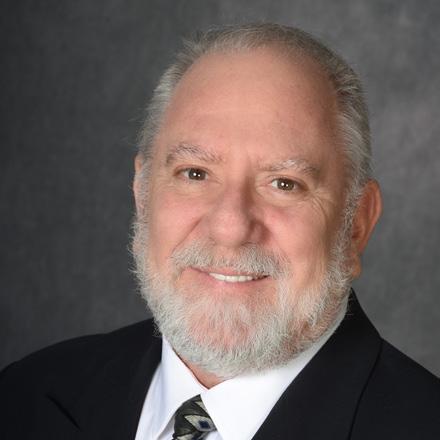
• UL 1450 Listed for Fire Protection

• Fastest Installation and Set Up Saves Big On Your Time
• Minimize Maintenance with Included Auto Tank Drain
• Set Compressor for Low, Standard or High Pressure Applications by pressing a button!

UL Listed Digital Pressure Switch Features:
• View Holding and Set Pressures
• View and Record Run Hours
• View Running Amperage
• View and Record Compressor Cycles
The ADVANCE Series from General Air Products is the most technologically advanced fire protection air compressor on the market. Installed in a flash compared to standard models, the UL Listed digital pressure switch is wired out of the box for all standard pressure settings. The ADVANCE series is also the only fire protection air compressor available that will automatically drain the tank of water. Use this
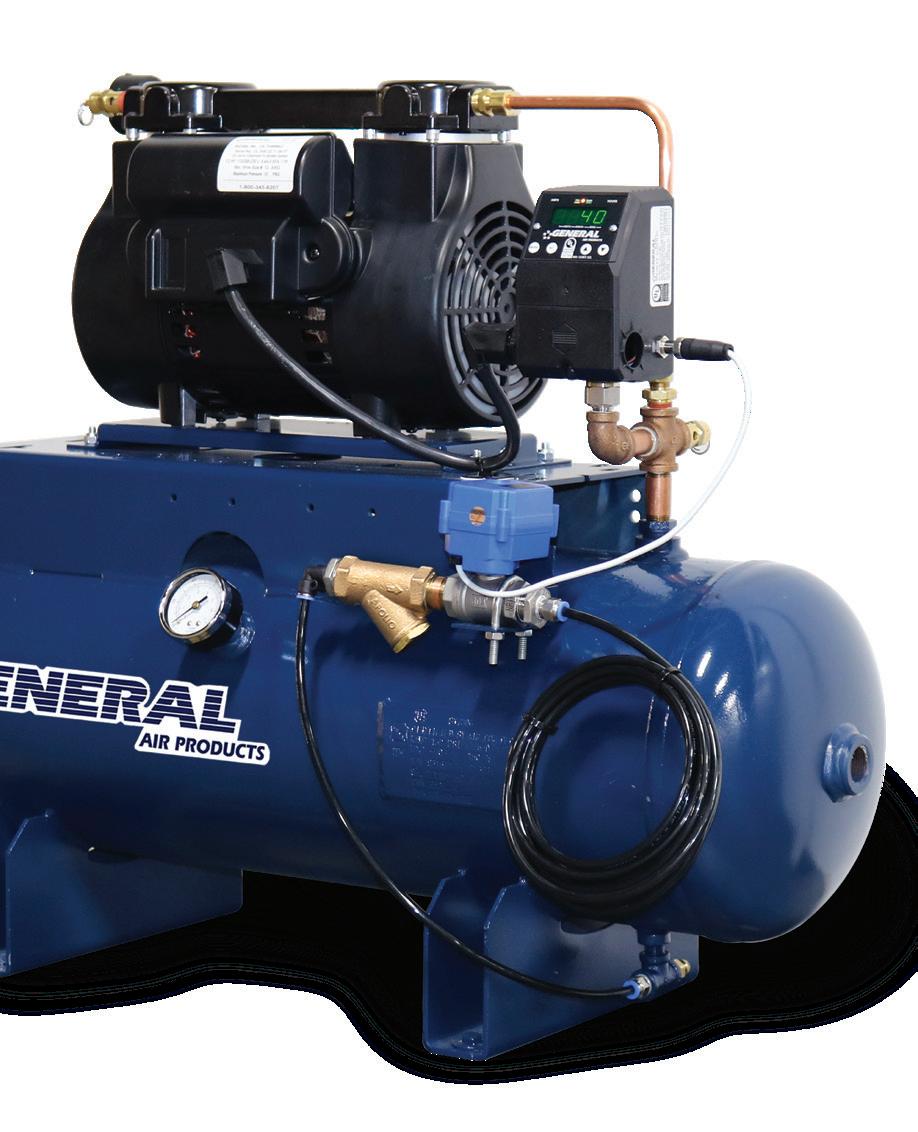

Vapor Pipe Shield from General Air Products is the newest product for corrosion mitigation in Dry and Pre-Action fire sprinkler systems. Utilizing VpCI Vapor Corrosion Inhibitors that have been mitigating corrosion in industries around the world for over 40 years, Vapor Pipe Shield will save you significant amounts of time and money compared to existing technologies.
Simplifying Corrosion Prevention.


Iam writing this column as I’m traveling to Kansas City for the second draft meetings for the 2025 edition of NFPA 13, Standard for the Installation of Sprinkler Systems . The months of June and July were extremely busy but exciting. I feel invigorated about the sprinkler profession and the positive impact of AFSA on the industry.

The 2023 NFPA Conference & Expo that I wrote about in the last issue could not have gone better. Walking the exhibit floor reminded me of our association’s reach. Exhibitor after exhibitor stopped me to talk about AFSA. As our new sprinkler and valve lab in Richardson is under construction, many of the exhibitors offered equipment and assistance in creating a state-of-the-art facility. They want to be a part of it. The NFPA annual Technical Meeting also had individuals talking to the AFSA technical team. Attendees wanted our thoughts and position on several issues. Kevin Hall led our efforts and spoke on an issue of importance to our members. Victoria Valentine was also in attendance but had to remain neutral and not offer any opinions. Her role was to observe the process in case she needed to rule on an issue. This was because she was appointed to the NFPA Standards Council a few months ago. What an honor for her and AFSA. Congratulations, Vicky!
The AFSA Board of Directors’ meeting was held in mid-July in South Dakota. The committee meetings were packed with people from throughout the United States. Many issues were debated and with a diverse group of people, opinions varied. In the end, numerous issues were resolved, and an approach to move forward was agreed upon. Watching this process never fails to impress me. The time and dedication these volunteers show for our association is truly remarkable.
Speaking of volunteers, AFSA holds 116 seats on NFPA Technical Committees. Many of these seats are held by volunteers who represent AFSA in this process. Our involvement would not be possible at this level without the support of our members. With this much activity, I want to announce that Kevin Hall and I are working on the relaunch of the AFSA Technical Advisory Committee (TAC for short). For those who have been around for years, you will recall that TAC was used to develop AFSA positions on technical issues. This group met regularly to ensure we fully understood the technical issues from the perspective of our members before we attended NFPA Technical Committee meetings. I served on TAC when I worked at Strickland Fire Protection. Over the years, this group became inactive, but we see the potential for real value in reviving it. The new TAC concept has been approved by the Board of Directors and AFSA At-Large Director E. “Parks” Moore, P.E., has been appointed as the first chair. Parks, Kevin, and I are developing the guidelines
and membership rules for TAC. At AFSA42, we will have a meeting to discuss its goals. If you are interested in this group, please join us for the conversation.
In the last year or so, our training classes have been sold out. Our staff has been adding additional classes to our training schedule to try to accommodate the growing need. Our in-person training at the chapter level has exceeded my wildest imagination. Traveling around the country, the excitement and desire for training has kept me invigorated. We have also expanded our membership and training offerings for Authorities Having Jurisdiction (AHJs). Numerous AHJ training classes have been held this year. The feedback from the attendees shows us the need for AHJ training is real.
The 2025 NFPA 13 second-draft meetings went well. Our AFSA representatives prepared, listened attentively, and discussed, agreed, or where necessary, argued for our members’ interest. Seeing how the “sausage” (the standard) is made with our input, makes me smile knowing that our involvement ensures our contractors’ interests are protected along with ensuring good fire protection. The Technical Committee on Hanging and Bracing met virtually. Kevin Hall and Victoria Valentine serve on that committee. The Technical Committee on Private Water Supplies also met virtually. Bob Caputo and Josh McDonald are members of that committee. The Sprinkler System Installation Technical Committee met in person. Jason Gill, Mike Meehan (current AFSA Region 6 Director and past AFSA Chair of the Board), and Parks Moore serve on that committee. Brett Heinrich, Kevin Hall, Josh McDonald, and I attended as guests. The Discharge Technical Committee also met in person. James Fantauzzi, Steven Scandaliato, Kevin Hall, and I are members of that committee. Josh McDonald attended as a guest.
This industry makes me proud, and being a staff member of AFSA makes me prouder. Team AFSA! n
JOHN AUGUST DENHARDT, P.E., FSFPE AFSA VICE PRESIDENT OF ENGINEERING & TECHNICAL SERVICES

Safety is at the forefront of every action we take as a company. To reduce risk and promote consistency, we take advantage of automatic welding technology when creating fire protection products for customers across the nation.



In 1983, the American Fire Sprinkler Association (AFSA) created its highest honor, the Henry S. Parmelee Award, to recognize an outstanding individual who has dedicated himself or herself to the fire sprinkler industry and the goal of fire safety through automatic sprinklers. The recipient of this year’s award has dedicated over 40 years of his life to the industry and its people and perhaps, more importantly, its students. He is an educator, mentor, leader, and above all else, a well-respected professional in the fire protection industry. For AFSA, it is an honor to recognize Jim Milke, P.E., Ph.D., FSFPE, chair of the Department of Fire Protection Engineering (FPE), University of Maryland (UMD), with the 2023 Henry S. Parmelee Award.
The story of Milke is one of happenchance. He didn’t pursue fire protection in the most obvious of ways that are encountered in this industry—because of family, a professor suggesting it to him, or even because he himself had a burning desire to work with fire. Rather, Milke stumbled upon fire protection as a manner of fate.
Milke’s journey began when he was a student attending Ursinus College in Collegeville, Pennsylvania, as a physics undergrad student. “I chose physics out of high school because I knew nothing about engineering. I don’t recall guidance counselors telling me to study engineering. I didn’t have any family mentors who were engineers that could talk about it, so I just picked physics because that’s something I knew from high school,” Milke recalls. “My freshman year, I went to a really small school. When fire alarms went off in the dorms, I was intrigued by the array of equipment the firefighters brought in to deal with a small fire or an overheated hot plate. I was curious, so I went down and volunteered as a firefighter at Collegeville Fire Department in December of my freshman year.”
Indeed, Milke’s curiosity would serve as a guiding direction that would later present new opportunities. “Come my sophomore year, I began to wonder, ‘What in the world am I going to do with this physics degree?’ I didn’t want to teach high school physics, and I didn’t want to go to graduate school for physics. I came to find out about fire protection engineering at an NFPA (National Fire Protection Associa -
tion) conference in Philadelphia. The fire department paid the registration fee for me to attend.”
As Milke walked around and attended presentations, he realized he was feeding his curiosity. “I was thinking, ‘Wow, this is great!’ I learned about fire safety and realized it’s a huge field. Then I happened to find a brochure on the University of Maryland on a table in this empty hallway. I picked it up, read it, and thought to myself, ‘This is perfect!’ And that’s how I got into the field.”
Following the completion of his bachelor’s degree in physics in 1974, Milke transferred to the University of Maryland and earned his bachelor’s degree in fire protection engineering in 1976. After graduation, Milke left for Fairfax County, Virginia, where he would serve as a fire protection engineer at the Fire Marshal’s Office. Simultaneously, Milke began teaching part-time in community colleges. “I got a taste of teaching and found that I enjoyed it.”

As Milke continued performing code and plan reviews by day and teaching by night, chance would present a new opportunity. “One of my past professors from Maryland had a research contract and invited me to come back and do research with him. It was just a year contract; there was no guarantee it was going to continue beyond that.”
Though working at the University of Maryland wouldn’t be the only opportunity offered to Milke. “As I’m filling out personnel papers
for Maryland as a research assistant, a faculty member says, ‘You know, you ought to take a grad class. It’s part of your fringe benefits here.’ That’s how I got into grad school!” Milke says with a laugh.
Timing would prove itself serendipitous for Milke once more. As Milke completed his master’s degree in mechanical engineering, Dr. Jack Watts, the original faculty member who had invited Milke to return to the university, left to start a consulting business. “Prof Bryan, the department chair at the time, asked me, ‘How would you like his position?’ As I thought about how I had enjoyed my time at the university, he said, ‘You know you’re going to need to get your Ph.D. if you do this.’ So, I said, ‘All right, I’ll do it.’”

Who was ‘Prof’? ‘Prof’, or Dr. John L. Bryan, was the department chair at the University of Maryland Department of Fire Engineering. Notably, he was also the recipient of AFSA’s Parmelee Award in 1991. “[He] was my initial supervisor, a mentor, and treated me very early on as a colleague and not as someone who reported to him. I appreciated all the guidance he gave me, it’s just amazing. Professionally, I would lean to Prof number one,” says Milke.

Bryan would encourage Milke to get involved within the industry as much as possible. “He wanted all students, class alum, and students in the FPE department to get involved—sit on standards committees. That’s where you learn what’s behind the curtain. Through his encouragement, I got involved with NFPA and was a member of the smoke control management and fire tests committees.”
In the 1980s, Milke was asked to participate in the NFPA


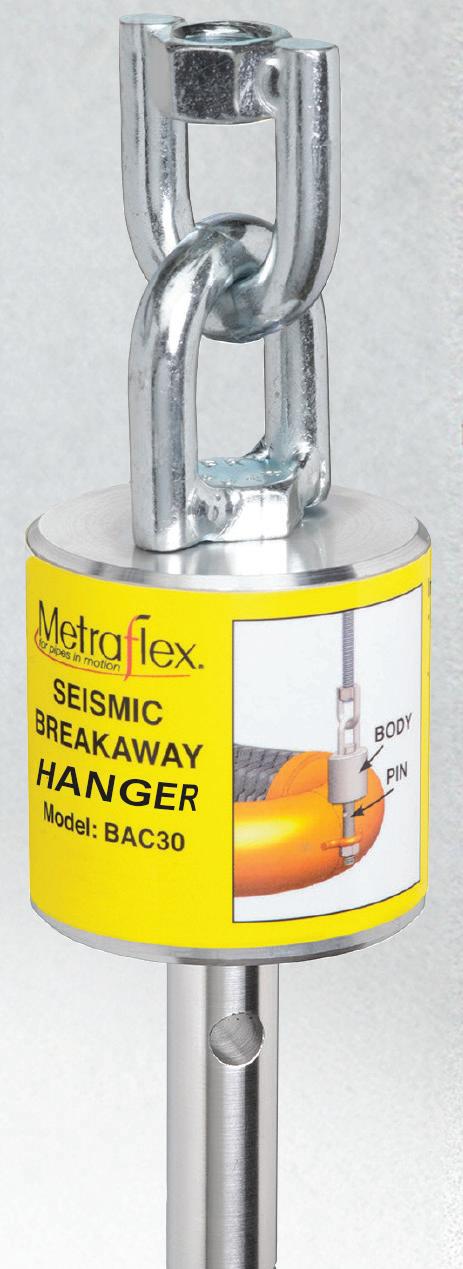





technical committee that were just expanding in the area for smoke control in high-rise buildings, atrium malls, and similar structures. He is recognized as one of the leading experts in the theory of smoke control system design.




Milke was also invited to be a part of NFPA’s Standards Council in the early 2000s. “Serving on the Standards Council was
a very interesting role to fill for the seven years that I was involved. It was an incredible opportunity to get connected and really see how these committees operate. Prof also encouraged me to join SFPE [Society of Fire Protection Engineers] and other professional societies. I served as president of our local SFPE chapter in the ‘80s, and then was elected to the SFPE board of directors and served as president of SFPE during that time. I served for ten years in total. I was also involved with ASTM [American Society for Testing and Materials] and participated in its standards and committees.”
In addition, when Prof stepped down from the Underwriters Laboratories’ (UL) Fire Council to become part of its board of directors, he nominated Milke to fill his spot, and he continues to serve on several UL committees to this day.

Over the course of 34 years, Milke has also been involved with the American Institute of Steel Construction (AISC), American Fire Sprinkler Association (AFSA), American Society of Civil Engineers (ASCE), and Institution of Structural Engineers (IStructE).
Milke credits Bryan’s advice for making his career more fulfilling. “I like being involved, seeing what really goes on, and understanding how you make that ‘secret sauce.’ I tell my students that you can’t just complain about the codes and standards. You need to get involved, make a difference. Don’t just sit on the sidelines whining. That’s been a part of my role, too, helping to improve the situation however I can through my participation.”
Milke also offers additional advice to his students. “Be open to opportunities! When I look at my career path, I didn’t have this grand vision or this grand plan. There were things that basically fell in my lap. But the fact that I was open to it and that I was looking and listening to these opportunities is a piece of it. Also, not being afraid to pursue some opportunities, and pursue some initiatives, was key to that. Don’t be afraid to volunteer and step up. We need to encourage the next generation of people to be ambitious, to pursue opportunities, and don’t settle for ‘good enough’!”

While Milke has been heavily involved in numerous associations over the years, he hasn’t limited his reach to just within the industry. Milke; Nicole Hollywood, the FPE department’s lead recruiter and advisor; and other members of the FPE department created the Fire
Protection Engineering Design Challenge (FPEDC) or “The Challenge” for high school students. Now in its ninth year, The Challenge allows high school teams to design and construct a two-room model apartment that includes innovative and effective detection, notification, and fire suppression systems. Schools that participate receive a local FPE alumni/professional in the field as a mentor. In recent years, the program has had as many as ten high schools participating in the final competition called “Burn Day,” which is now housed at the ATF Labs located near College Park. This year, AFSA supported FPEDC as a main sponsor and will continue to be a sponsor for the next five years.
“Recruiting high school students to our department to study fire protection engineering is an ongoing challenge and has been since the start of the program,” Milke states. “We must let people know that fire protection engineering exists and then help them understand what it is. Students don’t want to just sit in a classroom and listen to people drone on. So, what can we do to get them engaged and get them active?”
“It’s been a good competition,” Milke continues. “The selfish goal is to have students come and study fire protection engineering, and we get some, but that’s not the only reason why we’re doing this. If we can get students excited about STEM, then that’s a win.”
When asked why he believes most people do not pursue education in fire protection engineering, Milke explains, “I think it’s principally an awareness problem—that this field exists and knowing how much of a difference fire protection engineers make. I think that’s a key selling point that isn’t necessarily appreciated.”
He continues, “A lot of high-school-aged students are attracted to the bright, shiny thing and whatever that fad is right now—AI, drones, etc. There are fire protection aspects to that, and we try to get people to understand them. But saving lives and property, saving the environment, and all the good that comes from that is a strong selling point for us. We tell students, ‘You’re going to be doing something where people matter. You’re doing things to help people and companies at all levels! You’re dealing with populations of disadvantaged people and providing fire-safe housing in a cost-effective way. Sprinklers are a big part of that. I think we’re just trying to raise awareness of the incredible good that can happen from a career in fire protection engineering.”
“Jim has been the faculty lead and topical expert for The Challenge,” comments Jack Poole, P.E., FSFPE, principal, Poole Fire Protection, Inc., Olathe, Kansas, and one of Milke’s students during his time at UMD. “Since the inception of the program, Jim has been vital in creating the curriculum; determining challenge parameters; writing the rubric and rules which he later helped to edit into an eBook; serving as one of the early instructors who presented material at schools; creating videos and video lectures; serving as a judge during the Burn Day final competition; locating and securing sponsorship on multiple levels; and, most importantly, recruiting and expanding the fire protection engineering program.”
While a professor at UMD, Milke has taught classes on heat transfer, codes and standards, risk analysis, structural fire protection, fire suppression systems, smoke control, and life safety to more than 1,000 undergraduate students and hundreds of graduate students who have made considerable contributions to the fire sprinkler industry. He has conducted many research projects, written numerous research papers, and co-authored three books on smoke control with John Klote, D.Sc., P.E., Fellow ASHRAE.
“When I arrived at the university in 1977, Jim was working with Prof Bryan’s leading research called Project People and I continue to reference that research today,” comments William E. Koffel, P.E., FSFPE, SASHE, Senior Director, Special Projects, Koffel Associates, Columbia, Maryland “It has impacted the codes and engineering guides that practicing fire protection engineers use today. I have also incorporated lessons learned from that research in the work that I do helping clients prepare emergency plans and to train occupants and employees in how to respond to fire emergencies.”
Early in his career, Milke conducted research directly helpful to the fire sprinkler industry such as an examination of the quality of water in fire sprinkler systems. He was involved with many water quality research projects around campus to address the quality of water in sprinkler systems as well as determining the water supply for residential sprinklers. This work in the 1980s helped clear the way for Prince George’s County to pass its mandatory fire sprinkler ordinance for single-family homes in the early 1990s.
Later in his career, Milke was asked to be one of the experts in the NIST World Trade Center investigation after the events of September 11. He helped to study the performance of systems in the twin towers and adjacent buildings. His work helped to make sprinklers an expected system in almost all high-rise buildings.
Under Milke’s leadership as chair of UMD’s FPE Department, his vision for an improved department led to many programs and activities that have benefited the sprinkler industry, including:
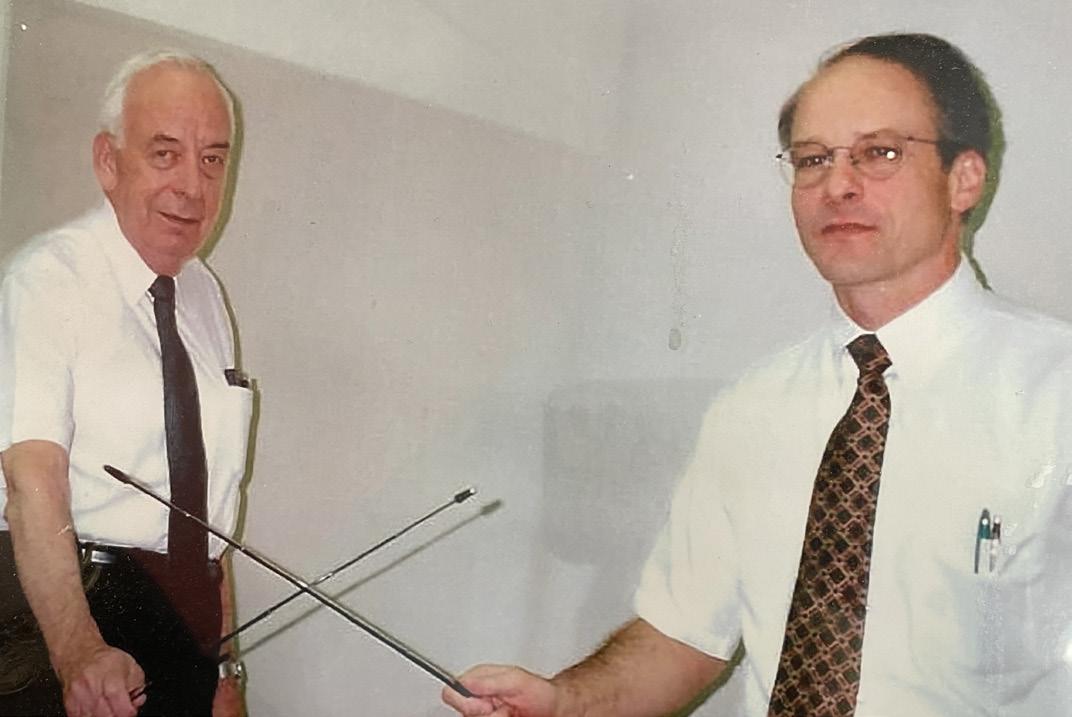
• Creating a professional track tenure position at the UMD FPE Department that focuses on teaching aspects of the industry that are specific to suppression and other fire protection systems.
• Improving relationships with many sprinkler manufacturers and contractors joining the UMD FIRE Center.

• Partnering with AFSA to provide a live side-by-side dorm room burn at UMD to show students and others the importance and value of automatic fire sprinkler systems.
If you think Milke plans to slip into a traditional retirement— think again. Milke plans to continue working part-time at UMD. “I don’t plan on evaporating and not touching fire protection again. I’ll still help with the department, teach a couple of classes, maybe take on a special project here or there. Otherwise, I’d love to stay involved with the standards committees that I’m on now.”
Perhaps his drive to continue working ties back to his pride in his students. “This is going to sound sappy, but when I would hear Prof Bryan talk during his time here, he’d say, ‘The greatest feeling you can have as a professor is to see what your previous students have gone on
to achieve.’ That’s something I’ve really come to appreciate. To see the John Denhardts, the Jack Medovichs, and others, and see where they’ve placed themselves in their organizations and their companies… being a part of that is huge! I think that’s got to be number one of all the things that I have done. It’s not one paper, one book, or anything like that; it’s the whole collection of people with whom I’ve been involved.”
“There was an event in May that recognized my time at the university, and someone tallied that around 80 percent of the undergrads who have come out of this department have been in a class I’ve taught. Among our graduate students, 100 percent of them who have graduated during my time here at Maryland have been in a class that I’ve taught. To have that much of an impact—that broad of a population that I have been able to touch—I may not be everyone’s best instructor, but just being able to be a part of that development and now to see where they are, it’s really impressive! It’s such a great feeling.”
AFSA will present Milke with its 2023 Henry S. Parmelee Award at AFSA42: Convention, Exhibition, and Apprentice
Competition to be held September 6-9, 2023, at the Signia by Hilton Orlando Bonnet Creek. The presentation will be the highlight of the general session as indicated by the accolades of this year’s honoree.
“I have known Jim for many years, and he has always been a mentor for me,” comments AFSA Chair of the Board Jack Medovich, P.E., senior vice president, Summit Companies. “He has worked to advocate for and prove the benefits of automatic fire sprinklers and has educated the current and future field of fire protection engineering professionals. He has left a lasting legacy on the fire protection industry, and it will be my greatest honor to present Jim with this award.”
“Throughout his more than 45-year career as a fire protection engineer and a professor at UMD, including the last 12 years as chair of the FPE department, nobody has done more to train fire protection engineers in the support of fire sprinkler systems than James A. Milke. I cannot imagine anyone with a better resumé to receive this award,”
comments Kenneth E. Isman, P.E., FSFPE, clinical professor of fire protection engineering at UMD.
“Dr. Milke has made significant contributions to the fire protection engineering and the fire sprinkler industry through his outstanding research, leadership, and advancement of the industry,” comments Poole. “I congratulate him on receiving this well-deserved award and in following the footsteps of Dr. John L. Bryan (Prof).”
“Jim has been a mentor for me throughout my career,” comments AFSA Vice President of Engineering and Technical Services John A. Denhardt, P.E., FSFPE. “He was not only one of my professors, he was a true leader who people wanted to follow by his example on how to work in a professional and responsible manner. I will always be grateful for my lifelong learning under Jim.”
Milke is quick to name others for supporting him. “I must mention the unconditional support I’ve had from my wife, Judy, and our children, Lauren and Jason. Their support was key so that I could pursue various professional activities, which sometimes required travel and time away from our home and family. I would also give a shout-out to my parents, who started me on this road—instilling a work ethic, encouraging me, and supporting me to go to college. Certainly, I couldn’t have done it without them.”
He concludes, “I think it’s already been conveyed, but I’ve had an incredibly enjoyable career. It’s something I couldn’t have even imagined when I was graduating from Maryland with my undergrad degree. There’s no way I could have planned this out to be this level of enjoyment and the flow of activity has just been phenomenal.”
George Couros recently wrote, “Your legacy as an educator is always determined by what your students do.” In this case, Milke’s legacy will continue remarkably for quite some time. n
EDITOR’S NOTE: Do you know someone who should be nominated for AFSA’s highest honor, the Henry S. Parmelee Award? AFSA is proud to recognize those individuals who have dedicated themselves to the professional advancement of the fire sprinkler industry and to the goal of fire safety through automatic sprinklers. AFSA accepts nominations year-round at www. firesprinkler.org/afsa-awards. (Member login required.)
1983 John M. Rhodes, FM Global Research Corp.
1984 William J. Meyer, Central Sprinkler Corporation
1985 C. B. Hall, American Automatic Sprinkler Co.
1986 Harold L. Black, Central Fire Protection, Inc.
1987 Edward J. Reilly, Ed Reilly Associates
1988 Richard T. Groos, The Viking Corporation
1989 Ron Coleman, Chief, Fullerton Fire Dept., CA
1990 Frank J. Fee III, Reliable Automatic Sprinkler Co., Inc.
1991 Dr. John L. Bryan, University of Maryland School of Fire Protection Engineering
1992 W. D. (Dave) Hilton, Chief, Cobb County Fire Department, GA
1993 J. Frank Riseden, AFSA President 1983-1991
1994 Haden B. Brumbeloe, Publisher, FPC Magazine
1995 Edward H. Smith, H.F.P. Corporation
1996 Tom Waller, Viking Fire Protection of the SouthEast
1997 Chester W. Schirmer, Schirmer Engineering Corp.
1998 Tom Siegfried, Retired Chief, Altamonte Springs, FL
1999 Donald D. Becker, Midland Automatic Sprinkler Co.
2000 Robert L. McCullough, AllSouth Sprinkler Company (awarded posthumously)
2001 Buck Buchanan, Central Sprinkler Corporation
2002 Frank M. Winiecki, General Sprinkler Corporation
2003 Jack Viola, H.F.P. Corporation
2004 Lowell Gillett, Fire Engineering Co., Inc. (retired)
2005 Joe Hankins, FM Global (retired)
2006 Art Cote, National Fire Protection Association
2007 Tom Groos, The Viking Corporation
2008 William E. Corbin, Mutual Sprinklers, Inc.
2009 Lloyd Ivy, AFSA Director of Membership (1986-2008)
2010 Marty Giles, VSC Fire & Security
2011 Willie Templin, American Automatic Sprinkler, Inc.
2012 Bob Rees, Sunland Fire Protection
2013 Russ Leavitt, Telgian Corporation
2014 James Golinveaux, Tyco Fire Protection Products
2015 George Wagner, Worsham Sprinkler Company
2016 Steve Muncy, AFSA President (1991-2016)
2017 Robert (Bob) G. Caputo, Fire & Life Safety America
2018 Kraig Kirschner, AFCON
2019 Manning Strickland, Strickland Fire Protection
2021 George DiMatteo, Ferguson Fire & Fabrication
2022 Kevin T. Fee, Reliable Automatic Sprinkler Co., Inc.
2023 Dr. James A. Milke, P.E., University of Maryalnd, Department of Fire Protection Engineering
EVERY DAY, ON EVERY PROJECT WE WORK FOR YOU.

CONTROL VALVE | Allows shut off for maintenance, inspection or renovation
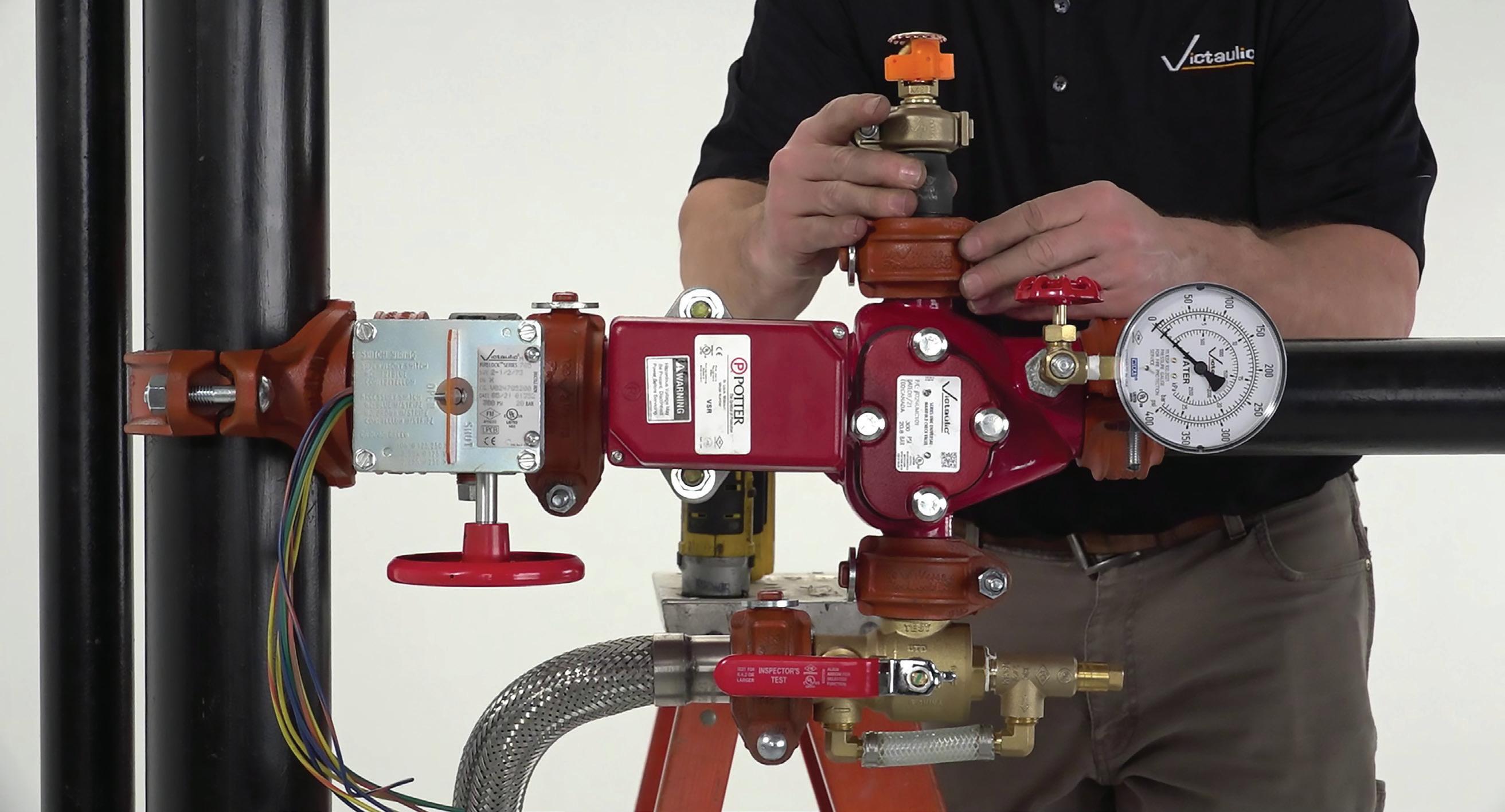
FLOW SWITCH | Transmits an alarm signal that the sprinkler system is active
TEST & DRAIN | Allows the water flow switch to be tested and the system to be drained for maintenance and inspections
CHECK VALVE WITH REMOVEABLE COVER PLATE | Allows the system to retain pressure over time
REQUIRED SYSTEM GAUGE(S) | Assesses loss of pressure over time during testing and verifies water pressure
FLEXIBLE DRAIN HOSE | Includes groove-by-groove captured coupling connections for labor savings

The comedian Bill Engvall made the saying “Here is your sign” well-known. When he said it, it was directed at someone who just said something that was obvious or just plain stupid. One story I remember Engvall telling at a comedy show was about a gentleman who was using a coat hanger trying to unlock his car. Another person walking past looked at the gentleman and asked, “You locked your keys in the car?” The gentleman responded, “No sir, I’m just trying to hang my car up to dry.” Here is your sign. So, what does this have to do with sprinkler systems? Failure to include the required signage is an obvious mistake that can be costly. Numerous signs are required by NFPA 13, Standard for the Installation of Sprinkler Systems, and other standards; however, many sprinkler designers, installers, and inspectors are not familiar with the signs they are required to provide. We all know about the requirement for control valve and main drain signs, but what about the rest? This article will discuss required signs and explain why they are critical to the safe operation of a fire protection system.
Let’s start by looking at NFPA 13, 2022 edition. Table A.16.17 is a summary of the signs that must be provided and was developed to make it easier to identify what signs are required by the body of the standard.
Section 16.9.11 requires all control, drain, venting, and test connection valves be provided with permanently marked weatherproof metal or rigid plastic identification signs. The identification signs must be secured with corrosion-resistant wire or chain. The control valve signs need to identify the portion of the building served. Figure 1 shows the front and back of a typical control valve sign that meets these
requirements. Systems that have more than one control valve that must be closed to work on a system or space are required to have a sign referring to the existence and location of the other control valve. Not providing this sign cost one building owner over $500,000 in property damage. In an emergency situation at this facility, all the control valves could not be turned off in a timely manner as no onsite personnel knew the location of the second control valve.
Section 8.6.1.4 requires that for all antifreeze systems that are remote from the system riser, a placard must be mounted on the system riser that indicates the number and location of all remote antifreeze systems supplied by that riser. Section 8.6.1.5 requires a placard at the antifreeze system control valve that indicates the manufacturer type and brand, volume, and minimum use temperature of the antifreeze solution used in the system.
Section 16.10.5.3.7 has a requirement that most are not aware of. Even though this requirement has been in NFPA 13 since the 2007 edition, I seldom see this sign provided. All auxiliary (low-point) drains on dry pipe systems or preaction systems require a sign at the dry pipe or preaction valve indicating the number of low-point drains and the location of each individual drain. Failure to provide this signage has caused numerous installing contractors to lose legal claims that were brought against them when systems experienced freeze damage. In one case, a maintenance crew drained all the low points they saw, but the system still experienced pipe damage due to freezing. There were seven low points, but two of them were not obvious. The low points were shown on the “as-built” drawings, but because the required signage was not provided, the installing contractor was still found liable for damage that occurred long after the system was completed. Luckily this claim was small, but it could easily have been much different. We have found that providing an 11-in. x 17-in. outline of the system indicating the
number and location of the low-point drains and the inspector’s test connection has satisfied this requirement. We usually install the outline in a picture frame and mount it near the dry or preaction valve. We also include this outline in our Operation and Maintenance manuals. This sign ensures that important information about the system is posted for future use and reference.
Section 16.12.5.8 covers the requirements for signage at the fire department connections (FDCs). Each FDC must include a sign having raised or engraved letters at least 1-in. high on a plate or fitting reading the type of systems served. If any system served requires 150 psi or more, a sign must be provided indicating the system demand pressure. Where an FDC serves only a portion of a building, a sign should be provided indicating the portion(s) of the building served.
Section 29.4 requires a Hydraulic Design Information Sign, sometimes referred to as a Hydraulic Data Nameplate. Like the valve identification signs required by Section 16.9.11, we all should be familiar with this sign since it has been around for years. However, over the years, a few modifications and new requirements have been added to this sign. Every hydraulically calculated system is required to have this sign. This means that if a multistory building has multiple systems, each system that has a water supply source, control valve, waterflow alarm, and drain requires its own signage. The sign must be placed at every alarm valve, dry pipe valve, preaction valve, or deluge valve supplying the corresponding hydraulically designed area unless the Authority Having Jurisdiction (AHJ) approves an alternate location. In addition, NFPA 13 requires signage at every system riser and floor control assembly. The Hydraulic Design Information Sign must include the location of the design area or areas, size (area) of or number of sprinklers in the design area, the discharge densities over the design area(s), the required flow and residual pressure demand at the base of the riser or fire pump (if applicable), the occupancy classification or commodity classification and maximum permitted storage height and configuration, the hose stream allowance included in addition to the sprinkler demand, and the name of the installing contractor. Where a system has been designed using the pipe schedule method, Section 29.5 requires a Pipe Schedule Design Information Sign or nameplate located on the corresponding system riser. Section 29.6 requires a General Information Sign. Even though this requirement has been in NFPA 13 since the 2007 edition, it is often missed. The installing contractor must provide a General Information Sign that can be used to determine system design basis and information relevant to the inspection, testing, and maintenance requirements of NFPA 25, Standard for the Inspection, Testing, and Maintenance of Water-Based Fire Protection Systems. The General Information Sign must be placed at each system control riser, antifreeze loop, and auxiliary system control valve. It needs to include the following information: name and location of the facility protected, occupancy classification, commodity classification, presence of high-piled and/or rack storage, maximum height of storage planned, aisle width planned, encapsulation of pallet loads, presence of solid shelving, flow test data, presence of flammable/combustible liquids, presence of hazardous materials, and presence of other special storage. In addition, the sign must include the location of venting valve(s), location of auxiliary drains and low-point drains on dry pipe and
preaction systems (note that this is also required by Section 16.10.5.3.7), original results of the main drain flow test, original results of the dry pipe or double interlock preaction valve test, and name of the installing contractor or designer. The sign must also indicate the presence and location of antifreeze or other auxiliary systems. Where injection systems are installed to treat corrosion (including microbiologically influenced corrosion or MIC), the type, concentration, and disposal requirements of the chemical must be shown. Finally, the sign must indicate the presence of nitrogen when used to allow for an increased C-factor in dry or preaction systems.
For marine systems, Section 31.2.7.5 requires an 18-in. x 18-in. sign displaying the applicable symbol for an FDC as shown in Table



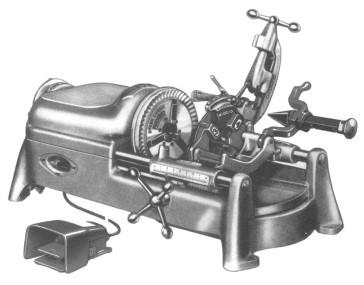

5.2 of NFPA 170, Standard for Fire Safety and Emergency Symbols, 2024 edition. The symbol must be placed at the connection so that it is in plain sight from the shore access point.
Section A.16.11.2 suggests installing a sign near the local alarm device required by Section 16.11.2. (Remember, the annex contains material that explains or clarifies the body of the standard but is not legally enforceable.) The sign should be located near the device in a conspicuous position and include wording such as: SPRINKLER FIRE ALARM—WHEN BELL RINGS CALL FIRE DEPARTMENT OR POLICE.
While not necessarily classified as a sign, Section 16.2.7.7 requires a list of the sprinklers installed in the property to be posted in the spare sprinkler cabinet. This requirement was added during the 2007 revision to NFPA 13. This list needs to include the following information: the Sprinkler Identification Number (SIN) or the manufacturer, model, K-factor, deflector type, thermal sensitivity, and pressure rating; general description; quantity of each type to be contained in the cabinet; and issue or revision date of the list.
In this section, we will cover the signage requirements in NFPA 13D, Standard for the Installation of Sprinkler Systems in One- and Two-Family Dwellings and Manufactured Homes, 2022 edition; NFPA 13R, Standard for the Installation of Sprinkler Systems in Low-Rise Residential Occupancies, 2022 edition; NFPA 14, Standard for the Installation of Standpipe and Hose Systems, 2024 edition; and NFPA 20, Standard for the Installation of Stationary Pumps for Fire Protection, 2022 edition.
NFPA 13D – This standard has only one requirement for a sign, and that is for a multipurpose piping system, which is defined by Section 3.3.13.3 as: “A piping system intended to serve both domestic needs in excess of a single fixture and fire protection needs from one common piping system throughout the dwelling unit(s).” This is not the typical independent sprinkler system most sprinkler contractors are installing. This is a combined domestic water/ sprinkler system for the dwelling unit(s). In accordance with Section 6.3.4, when a multipurpose piping system is installed, a warning sign with minimum 1/4-in. letters is required to be affixed to the main shutoff valve and states the following:
WARNING: THE WATER SYSTEM FOR THIS HOME SUPPLIES FIRE SPRINKLERS THAT REQUIRE CERTAIN FLOWS AND PRESSURES TO FIGHT A FIRE. DEVICES THAT RESTRICT THE FLOW OR DECREASE THE PRESSURE OR AUTOMATICALLY SHUT OFF THE WATER TO THE FIRE SPRINKLER SYSTEM, SUCH AS WATER SOFTENERS, FILTRATION SYSTEMS, AND AUTOMATIC SHUTOFF VALVES, SHALL NOT BE ADDED TO THIS SYSTEM WITHOUT A REVIEW OF THE FIRE SPRINKLER SYSTEM BY A FIRE PROTECTION SPECIALIST. DO NOT REMOVE THIS SIGN.
The intent of this sign is to warn the unknowing homeowner or residential contractor about the need to consider the sprinkler system before adding any device to the combined water system.
NFPA 13R – Section 5.2.14.4 requires all control, drain, and test connections be provided with permanently marked weatherproof metal or rigid plastic identification signs. The identification signs must be secured with corrosion-resistant wire, chain, or other approved means. The control valve signs need to identify the portion of the building served. Systems that have more than one control valve that must be closed to work on a system or space are required to have a sign referring to the existence and location of the other valves.
Section 6.11.3 requires signage for FDCs. Each FDC to a sprinkler system must be indicated by a sign having raised or engraved letters at least 1 in. in height on a plate or fitting indicating the type of system(s) served (e.g., AUTOSPKR., OPEN SPKR., or STANDPIPE).
While not necessarily classified as a sign, Section 11.1.7 requires a list of the sprinklers installed in the property to be posted in the spare sprinkler cabinet. This requirement is similar to the NFPA 13 requirement. The list must include the following information: the Sprinkler Identification Number (SIN) or the manufacturer, model, K-factor, deflector type, thermal sensitivity, and pressure rating; general description; quantity of each type to be contained in the cabinet; and issue or revision date of the list.
NFPA 14 – Section 7.10 requires that all required signs be permanently marked and constructed of weather-resistant metal or rigid plastic materials.
Section 8.7.1 has numerous requirements for signs. It requires that all main and sectional system control valves, including water supply control valves, be equipped with a sign indicating the portion of the system controlled by the valve. In addition, all control, drain, and test connection valves must be provided with signs indicating their purpose. Where sprinkler system piping supplied by a combined system is supplied by more than one standpipe (“loop” or “dual-feed” design), a sign must be located at each dual or multiple feed connection to the combination system standpipe to indicate that to isolate the sprinkler system served by the control valve, an additional control valve or valves at other standpipes must be shut off. The sign must also identify the location of the additional control valves. Where a main or sectional system control valve is in a closed room or concealed space, the location of the valve must be indicated by a sign in an approved location on the outside of the door or near the opening to the concealed space. Where hose connections are not located in exit stairways, signs must be provided in accordance with NFPA 170 to identify the location of the hose connection in an approved manner. Valve cabinets, where provided, must be marked to indicate the contents. Lettering must be red with a white background and 21/2 in. in height. Annex section A.8.7.1.5 suggests that it might be necessary to mount hose connection signs parallel, perpendicular, or at an angle to the plane of the mounting surface on which the sign is located. The point is that the sign must be readable in an emergency by responding personnel. Dry systems with low-point drains must have a sign at an approved location indicating the number of low-point drains and each individual drain. Where a fire pump is provided to supply an automatic standpipe system, Section 8.7.2 requires a sign at the pump indicating the minimum pressure and flow required at the pump discharge flange to meet the system demand.
Section 8.7.3 requires a Hydraulic Design Information Sign to identify the basis of the system design. The sign must be located at the water supply control valve for automatic or semiautomatic standpipe systems and at an approved location for manual systems. The sign must indicate the location of the two hydraulically most remote hose connections, the design flow rate for the connections, the design residual inlet and outlet pressures for the connections, the design static pressure, the design system demand (i.e., flow and residual pressure) at the system control valve or at the pump discharge flange where a pump is installed, and at each FDC.
Section 8.7.4 requires that all pressure-regulating devices be equipped with a sign that indicates the static and residual inlet and outlet pressures and flows. Section A.8.7.4 states that the sign can be mounted on the valve or in the vicinity of the valve as long as it is visible during periodic tests and inspections.

Section 9.9 has requirements for FDC signage. Each FDC must be supplied with a sign labeled STANDPIPE with letters at least 1-in. high that allows the sign to be read from the street. For manual systems, the sign must also indicate that the system is manual and that it is either wet or dry. If automatic sprinklers are also supplied by the FDC, the sign or combination of signs must indicate both designated services (e.g., STANDPIPE AND AUTOSPKR or AUTOSPKR AND STANDPIPE). A sign must also show the pressure required at the inlets to deliver the standpipe system demand if over 150 psi. Where an FDC serves multiple buildings, structures, or locations, a sign must be provided indicating the buildings, structures, or locations served.
Section 12.11 requires the installation of signs required by this standard to be verified at system acceptance.
NFPA 20 – For positive displacement pumps, Section 8.4.10 requires a permanently marked weatherproof metal or rigid plastic sign affixed to the system that indicates the required time to achieve the system design pressure. The sign is required for acceptance testing and future periodic testing.
Section 10.1.2.5.2 has a requirement for electrical fire pump systems when multiple pumps serve different areas or portions of the facility. In these applications, an appropriate sign must be conspicuously attached to each controller indicating the area, zone, or portion of the system served by that pump or pump controller. Section 12.1.3.3.2 has the same requirement for engine-driven controllers.
Section 11.4.2.4 requires a method to avoid overfilling diesel fuel tanks. One method that is allowed is the installation of a permanent sign at the fill point with the tank calibration chart and instructions for the filling procedure, which includes having the person performing the fill operation determine how full the tank is prior to filling and calculate the quantity of fuel (in gallons or liters) that it will take to get the tank to 90 percent of its capacity. Where climatic conditions are such that the sign could be obscured by ice or snow, weathered beyond readability, or otherwise rendered unreadable, the fill procedure and chart can be stored in an office window, lock box, or other location accessible to the person filling the tank.
In summary, the installation of signs is often ignored or thought of as unimportant. However, the need for signs is clear. Failure to provide
the required signage can cost valuable time in an emergency and leave the installing contractor liable for damages. Additionally, NFPA 25 requires that many of the required signs be checked during required inspections, and if missing, they must be replaced. Specifically, the Hydraulic Design Information Sign must be replaced if missing. This could result in the installing contractor receiving a telephone call from the property owner asking, “Where’s my sign?” Having another contractor develop a Hydraulic Design Information Sign without the benefit of the as-built drawings can be expensive. No matter what type of system you are installing, make sure you follow all the requirements for proper signage. Don’t make this obvious (and often expensive) mistake. You need to be able to say, “Here is your sign!” n
ABOUT THE AUTHOR: John August Denhardt, P.E., ET, FSFPE, is AFSA’s vice president of engineering and technical services. He is a member of the NFPA 13 Sprinkler Discharge Committee and is a Fellow of SFPE. Denhardt is an NFPA Research Foundation trustee, sits on the University of Maryland (UMD) Department of Fire Protection Engineering’s board of visitors, and is a member of the SFPE board of directors. Denhardt holds a Bachelor of Science degree in fire protection engineering from UMD in College Park.

EDITOR’S NOTE: This article first appeared in two parts in the January/February 2017 and March/April 2017 issues of Sprinkler Age. As one of the most-read Sprinkler Age articles to date, it was revised to reflect the latest editions of the applicable standards and reprinted in this issue.
IMPORTANT NOTICE: The article and its content do not represent a Formal Interpretation issued pursuant to NFPA Regulations. Any opinion expressed is the personal opinion of the author and presenter and does not necessarily represent the official position of the NFPA and its Technical Committee.
The American Fire Sprinkler Association (AFSA) welcomes its members to Orlando, Florida, for AFSA42: Convention, Exhibition, and Apprentice Competition. This year is also the 30th anniversary of the National Apprentice Competition (NAC), and its seven competitors represent the best of the fire sprinkler industry. This competition allows apprentices representing member companies from across the country to compete in two phases of testing, written and hands-on, for the chance at national recognition and cash prizes.
AFSA’s National Apprentice Competition, started in 1994 by the late Robert (Bob) L. McCullough, then chair of the Apprenticeship & Education Committee, was created to promote apprentice training and give recognition to the apprentices who are actively enrolled in the AFSA Apprenticeship program. Now celebrating its 30th year, the competition continues to attract more fire sprinkler apprentices from AFSA local chapters and member training programs from all corners of the United States, bringing them together annually for the fire sprinkler industry’s foremost showcase of training excellence.
Eligibility for apprentices to compete is based on the following criteria: their employer must be a member of AFSA in good standing, the apprentice must actively be participating in the AFSA apprenticeship courses or enrolled in the NCCER/AFSA Fire Sprinkler Fitting Training Series, and they must have at least one year of field experience with a minimum of six
months combined hands-on experience in cutting, threading, and installing steel pipe and CPVC pipe. The first competition phase consists of a 100-question multiple-choice exam provided by AFSA. The test is proctored online, making it accessible to contestants from all 50 states. The results of this test will determine who will go on to participate in the live competition at AFSA42.
The top seven apprentices in Phase I receive the following: a full registration to the convention and a second full registration for their employer; an expense-paid trip to AFSA42 to compete; accommodations at the Signia by Hilton Orlando Bonnet Creek; and a brand-new set of hand tools to use in Phase II.
Phase II entails a more thorough written exam given at the convention, followed by a live practical installation in the exhibition hall at AFSA42. The Phase II exam is based on all four levels of the AFSA/NCCER Contren® Learning Series Sprinkler Fitting curriculum. Following a written exam, apprentices must cut, thread, and install a steel and CPVC piping system with sprinkler heads and perform a water pressure test. Participants are graded on accuracy, craftsmanship, and safety.
The combined results of the Phase II written and hands-on tests determine the winner. A lot is on the line for these apprentice hopefuls as prizes are awarded based on finishing rank: first place takes home a $5,000 cash prize, second place receives $3,000, third place receives $2,000, and all other finalists receive $1,000.
This year the nation’s top seven apprentices will travel to Orlando to try their luck at becoming the next AFSA NAC champion. Sprinkler Age caught up with each finalist for a quick Q&A to help you
get to know the finalists before cheering them on during the live competition.
Samuel Callison, Titan Fire Protection Inc., Vista, CA
Why did you choose to pursue a career in fire protection? I have family in the trade, and it has treated them well. I want to provide my family with the same financial security that I grew up with.
What advice would you give someone thinking about entering the fire protection trade? Pay attention in class, do what your foreman says, show up on time.
Matthew Comp, Diamond Automatic Sprinklers, Inc., Mt. Holly Springs, PA
Why did you choose to pursue a career in fire protection? I have always had a passion for working with my hands. When I saw an advertisement from Diamond looking for an apprentice, I was intrigued and started doing some research. After seeing all the different tasks it takes to install and maintain a sprinkler system, I knew that this industry would be an ideal fit for me.
What is the key ingredient to your success? I believe the key ingredient to my success is my adaptability. Being able to quickly and effectively switch between multiple tasks and maintain focus on each one is such a strong skill in this profession.
Daniel Coticchio, Piper Fire Protection, Clearwater, FL
What do you enjoy most about the work you do? I love to work with my hands and create something. It also brings me joy to say I help prevent fires and save lives.
What does the future of the industry look like to you? A lot more innovative ideas will come together to make the trade better. It wasn’t long ago that it was 4-in. threaded pipe and back-breaking work.
Timothy Farley, Allied Fire Protection, Fargo, ND
Why did you choose to pursue a career in fire protection? I lucked out after the
local plumbing union denied me for its apprenticeship. I consider myself to be lucky to be here after being hired on with zero experience.
What does the future of the industry look like to you? To me, it looks solid, and more people are interested in fire protection and are taking fire protection more seriously. There’s plenty of oppor tunity to advance my career.


Armonie Jones, Aqueduct Fire Protection Systems, Williamstown, NJ

What do you enjoy most about the work that you do? What I enjoy the most is coming across new places, buildings, warehouses, and coming up with a game plan like a checklist, and then running pipe through them from the starting building point at times until finished down to the pump room with (all systems normal) and being able to say I piped that building.
What advice would you give someone thinking about entering the fire protection trade? When I started, I didn’t understand the process or introduction-like steps, but the further I got, I realized you needed to have knowledge on how all the pieces of a system work in order to only install it correctly, but save you trouble, manpow er, and water chaos. Been there!

Andrew Lynch, Johnson Controls, Colorado Springs, CO

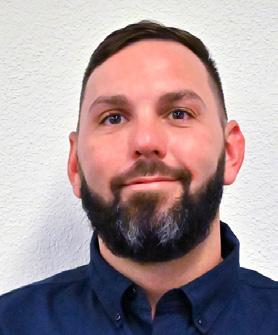

Why did you choose to pursue a career in fire protection? I was at a point in my life where I was looking for a career that I could grow with instead of just another dead-end job. I’ve always enjoyed working with my hands, so when I heard that Johnson Controls was hiring sprinkler fitter apprentices, I thought it would be a good fit.

What does the future of the industry look like to you? Fire protection has a bright

future filled with potential. This new technology being developed and policies being put in place to keep people and
until I got into the plumber’s union. I started to love the work I was doing and progressed quickly. Then I was offered
From l to r: Samuel Callison, Matthew Comp, Daniel Coticchio, Timothy Farley, Armonie Jones, Andrew Lynch, and Brian Otto are the seven finalists for AFSA’s 30th Annual National Apprentice Competition, to be held during AFSA42 in Orlando.Do NFPA 13D and NFPA 13R systems need relief valves? The short answer to this question is “No.” A longer answer would be that you only need to install a relief valve on an NFPA 13D, Standard for the Installation of Sprinkler Systems in One- and Two-Family Dwellings and Manufactured Homes, or NFPA 13R, Standard for the Installation of Sprinkler Systems in Low-Rise Residential Occupancies, system if the piping is designed and installed in a gridded arrangement and alternative provisions have not been made to accommodate thermal expansion of the water in the piping. This article will be a short history of this subject and how we got to the point where this question needed to be asked.
In order to set the stage, we need to go back to the 1960s. In the mid-1960s, all fire sprinkler systems were either laid out as tree systems or loop systems. The overwhelming majority of fire sprinkler systems were tree systems with the pipes sized using a pipe schedule. A small number of fire sprinkler systems used hydraulic calculations to size the pipe, with some of these having a simple loop. This was the most complicated piping arrangement that could be reliably calculated by hand, and computer programs for hydraulic calculations were not yet on the market (although Art Cote was working on one at this time while a student at the University of Maryland).
By the late 1960s, a few engineers were using the time they could get on large mainframe computers to do the hydraulic calculations for gridded sprinkler systems to size the pipe and ensure that the water supply would be sufficient. When these first gridded systems were installed, a common problem emerged that wasn’t foreseen by these engineers: the pressure in these systems got very high during hot summer months, and in some of these early systems, ruptures occurred because the system was unable to withstand the pressure caused by the change in temperature.
The problem was that gridded systems do not trap air like tree and loop systems. When tree and loop systems are first filled with water, air is pushed to the ends of the branch lines and compressed until the air pressure equalizes with the water pressure. If the water temperature rises, the pressure will go up, and the water will expand into the air space, compressing the air a bit more until the pressures equalize again. The air pockets create space for the water to expand.
Consider the following example. A wet-pipe tree sprinkler system with a total volume of 500 gallons within the piping [starting with the air at 0 psig (14.7 psia)] that is initially filled with water with a temperature of 50°F and a maximum pressure of 50 psig (64.7 psia). Using Boyle’s Law (the pressure times the
volume within a system is a constant as long as you consider the absolute pressure, not the gauge pressure), we can calculate that the water will fill 386 gallons of the piping and compress the air in the branch lines until the total volume of compressed air is 114 gallons (500 x 14.7/64.7 = 114; 500 – 114 = 386).
When water warms up from 50°F to 120°F (as it might during the summer), it expands by about 1 percent in volume. In our example, this would cause the water to go from 386 gallons to 390 gallons, which would compress the air from 114 gallons to 110 gallons. Using Boyles Law again, we can calculate the effect that this has on the air pressure (64.7 x 114/110 = 67; 67 – 14.7 = 52. 3). The air pressure would go up to 67 psia, which is a gauge pressure of 52.3 psig. So, in a tree system, where the water has somewhere to expand, the effect of expansion due to thermal changes is negligible (from 50 psi to 52.3 psi in this case).
But in a gridded system, there is no trapped air after the system has been filled and tested a few times. When the water temperature goes up, the water pressure goes up, and the water tries to expand, but there is no place for the water to go, forcing the pressure to go up exponentially since water is an incompressible fluid. The water quickly gets to a pressure that exceeds the rated pressure for the pipe, valves, and fittings, and eventually, a rupture can occur at a weak point in the system.
By the early 1970s, many engineers were designing gridded systems with a relief valve to combat this problem. It was not until the 1985 edition of NFPA 13, Standard for the Installation of Sprinkler Systems, that a requirement was added to the standard to require a relief valve on all wet-pipe systems where the piping was arranged in a grid with an exception allowing for the relief valve to be omitted if the system had “auxiliary air reservoirs” (see Proposal 1329 in the Fall 1984 Technical Committee Report). The relief valve needed to be set to open at 175 psi or 10 psi lower than the maximum system pressure, whichever was greater. Wet-pipe sprinkler systems worked well for more than 100 years, with only gridded systems being required to have relief valves (if they did not have the air reservoirs, and such reservoirs were not very common).
In the early 2000s, corrosion of steel pipe in wet-pipe fire sprinkler systems was receiving a great deal of scrutiny. For reasons that have never fully been explained, steel pipe in fire sprinkler systems was no longer lasting for the number of years that building owners expected. Whether due to microbiologically influenced corrosion (MIC) or just plain oxidation, corrosion became a significant problem. Engineers started to add air vents to sprinkler systems to minimize corrosion, and
there were concerns that tree and loop systems with air vents would suffer the same concerns for bursting as gridded systems. In the 2010 edition of NFPA 13, Standard for the Installation of Sprinkler Systems, the section requiring relief valves (7.1.2.1 in that edition) was changed from requiring them on gridded systems to requiring them on all wet-pipe systems (unless they had air reservoirs). Part of the substantiation for the change was “the growing popularity of venting trapped air from metallic wet pipe systems to inhibit corrosion activity increases the importance of protecting all wet pipe systems from over-pressurization.”

Unfortunately, the people who submitted the proposed new language for NFPA 13 and the NFPA committee in accepting this language did not differentiate between wet-pipe systems with steel piping (which might suffer from corrosion) and wet-pipe systems with non-metallic piping or copper tube (which might not have any corrosion issues). Therefore, since the 2010 edition of NFPA 13, all wet-pipe systems have required a relief valve unless they have air reservoirs designed to absorb the pressure increases that might occur with thermal expansion. The air reservoir exception is important to note since it allows the designer an alternative to a relief valve.
In the 2016 edition of NFPA 13, the standard added a requirement for an air vent to be installed at a high location in all wet-pipe systems using metallic pipe in order to vent trapped air (see Section 7.1.5 in that edition). This makes it all the more important to have a relief valve on the system since it is less likely that there will be air to absorb the expansion of the water due to thermal changes.
It is important to note that the requirements for relief valves and air vents only exist in NFPA 13. The residential standards,
NFPA 13R and NFPA 13D, do not have similar requirements because it is rare to find steel piping in such systems, and it is even rare to find gridded systems. In addition, these systems tend to be smaller so that the effect of thermal expansion is minimized. Tree and loop systems tend to trap air, which allows for the thermal expansion of the water and engineers have not been adding air release devices to NFPA 13D or NFPA 13R systems because the pipe that they tend to use is more resistant to corrosion.
NFPA 13D and NFPA 13R systems have been successfully installed for more than 30 years without air release mechanisms and without relief valves, and the experience with these systems has been very good. Reports of such systems rupturing due to thermal expansion of the water inside the piping have not surfaced. There are no requirements for air release mechanisms or relief valves in either NFPA 13D or NFPA 13R. While NFPA 13R does refer back to NFPA 13 for some installation rules, the intent has not been to pick up the requirements for a relief valve for tree or loop systems. For those purists who want to make sure that every system meets every single word of the standard, you can point to the air reservoir exception for tree and loop systems and perform a simple analysis of the volume, pressure, and temperature as was performed above to show that the trapped air in such systems is sufficient to leave the relief valve off of the system. n
ABOUT THE AUTHOR: Kenneth E. Isman, P. E., FSFPE, is a clinical professor at the University of Maryland in the Fire Protection Engineering Department, where he teaches classes on fire protection system design, life safety analysis, and performance-based design. He worked in the fire sprinkler industry from 1987 to 2014 and has been a member of the NFPA Committee for Residential Sprinkler Systems since that committee was first formed in 1998 and is currently the committee chair.
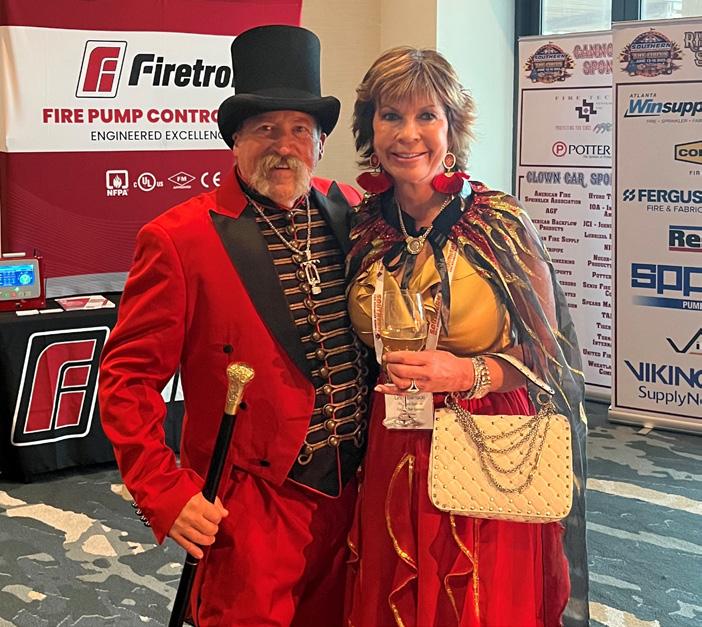
Did you hear the circus music? The barker calling out, “Get your ticket for the greatest show”? The Southern Fire Sprinkler Summit host chapters (Alabama, Arkansas, Georgia, and Louisiana) welcomed guests to its Great Sprinkler Summit June 13-16, 2023, at The Lodge in Gulf State Park, Orange Beach, Alabama. The schedule included seminars, welcome reception, vendor expo, bazaar, and networking meals.

“We wanted registrants to engage in training and education, networking, and most of all—fun!” says event co-organizer Ellen Ballard, LFSA executive director.



“Everyone embraced the theme and joined in the fun, which made everything amazing!”
An estimated 225-275 people attended the summit, including over 100 seminar registrants and 37 vendors. Major sponsors included Core & Main, Ferguson Fire & Fabrication, Reliable, SPP Pumps, Victaulic, Viking SupplyNet, and Winsupply.
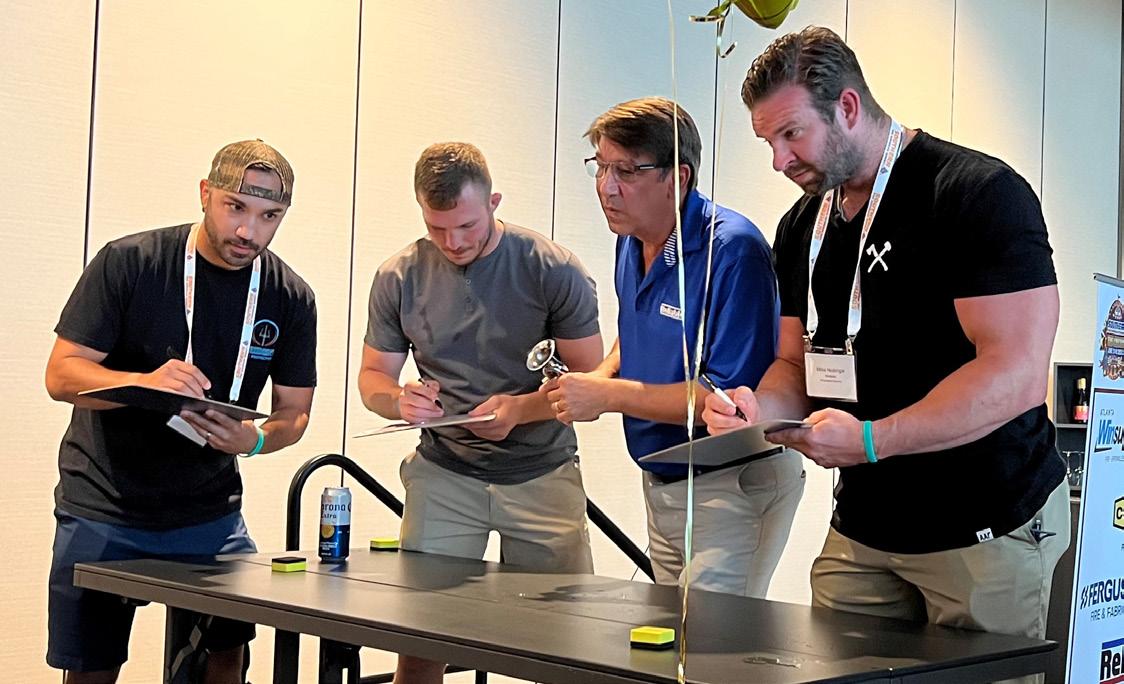
Twenty-five seminars were held covering a variety of technical and managerial topics, including NFPA 25 Internal Assessment & Obstruction Investigation, Residential Sprinklers, Fire Pump Installation Requirements, Waterflow Test Procedures, General Requirements for Storage, Comparing Contrasting Residential Requirements in NFPA 13/13R/13D, Weekly/Monthly Run Testing—NFPA 25, Cannabis and the Workplace, Foreman/Superintendent Panel Discussion, NICET and the Certification Process, NFPA 25 Roles and Responsibilities, NFPA Beyond the Annual Inspection (3-Year, 5-Year, and 10-Year Tasks), Fire Pump Sizing, Selection, and Installation, Fire Protection Under Construction—NFPA 241, Updates to the 2023 Edition of NFPA 25, and Jobsite Safety Programs. Presenters included AFSA President Bob Caputo, CFPS; AFSA Vice President of Engineering & Technical Services John August Denhardt, P.E., FSFPE; and AFSA Senior Manager of Engineering & Technical Services Kevin Hall, M.Eng, P.E., ET, CWBSP, PMSFPE. Hall and AFSA Manager of Engineering & Technical Services Joshua McDonald, MSET, CFPS, CWBSP, WBITM, taught a two-day design school, featuring installation and hydraulics.


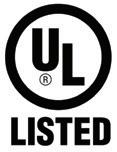

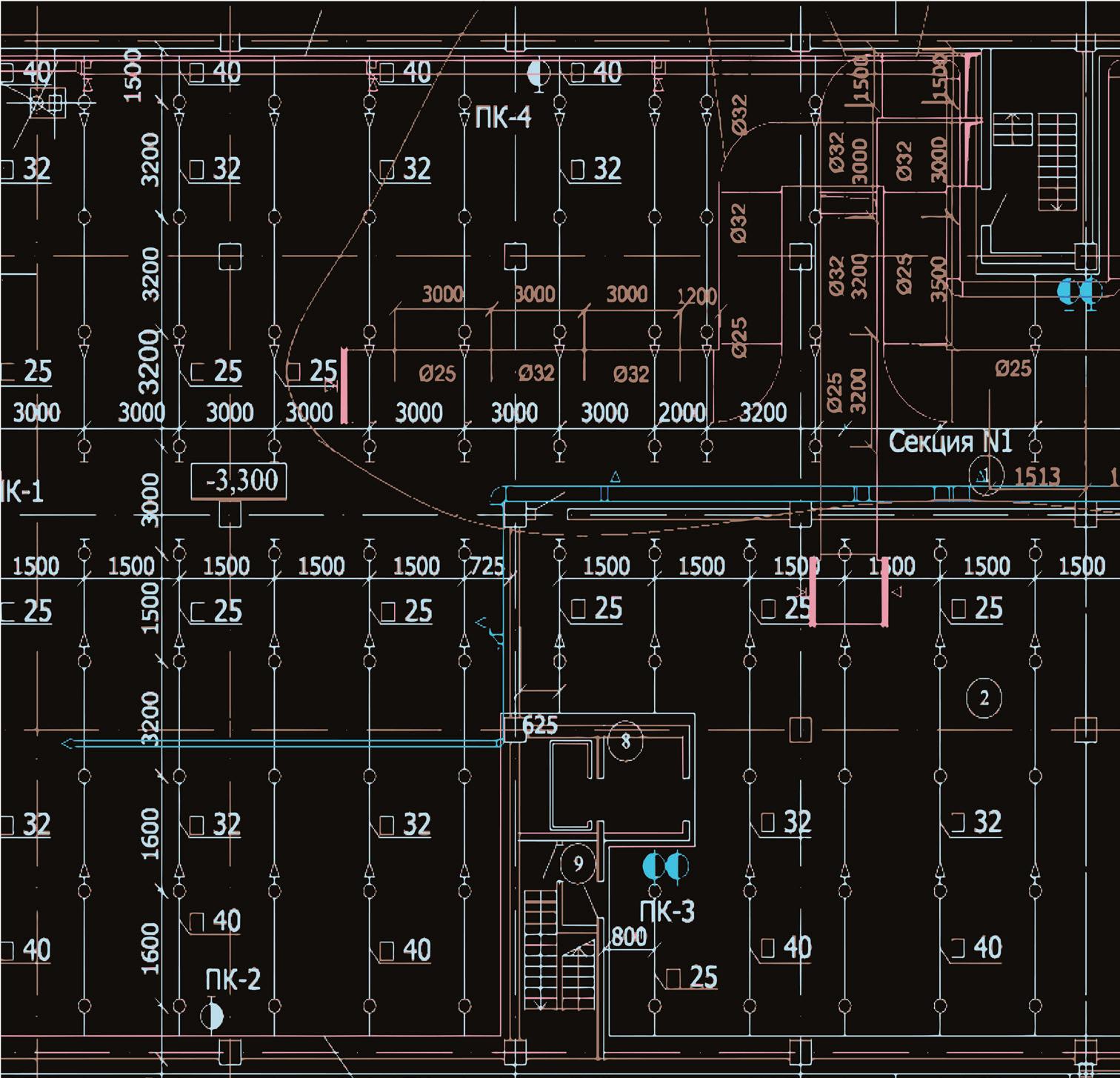
The Associates’ Bazaar, which featured the culmination of physical and mental games played over the course of the event, was a huge success with 16 teams of six participating. The winning team, Brendle Sprinkler Company, won the SFSS “Game Night” championship belt.
During the vendor expo, several contests were held. Best Costume Winner was James Yost of TALCO, Best Dance Winner was Avonlea Brendle, and Best Booth Winner was Core & Main. Winners received cash prizes and bragging rights.

Kudos to Chapter Executive Directors Ellen Ballard (Louisiana), Joy Willis (Alabama), Coleman Farrar (Arkansas), and Taylor Johnson (Georgia) for their hard work, time, and commitment to making this event a success! n
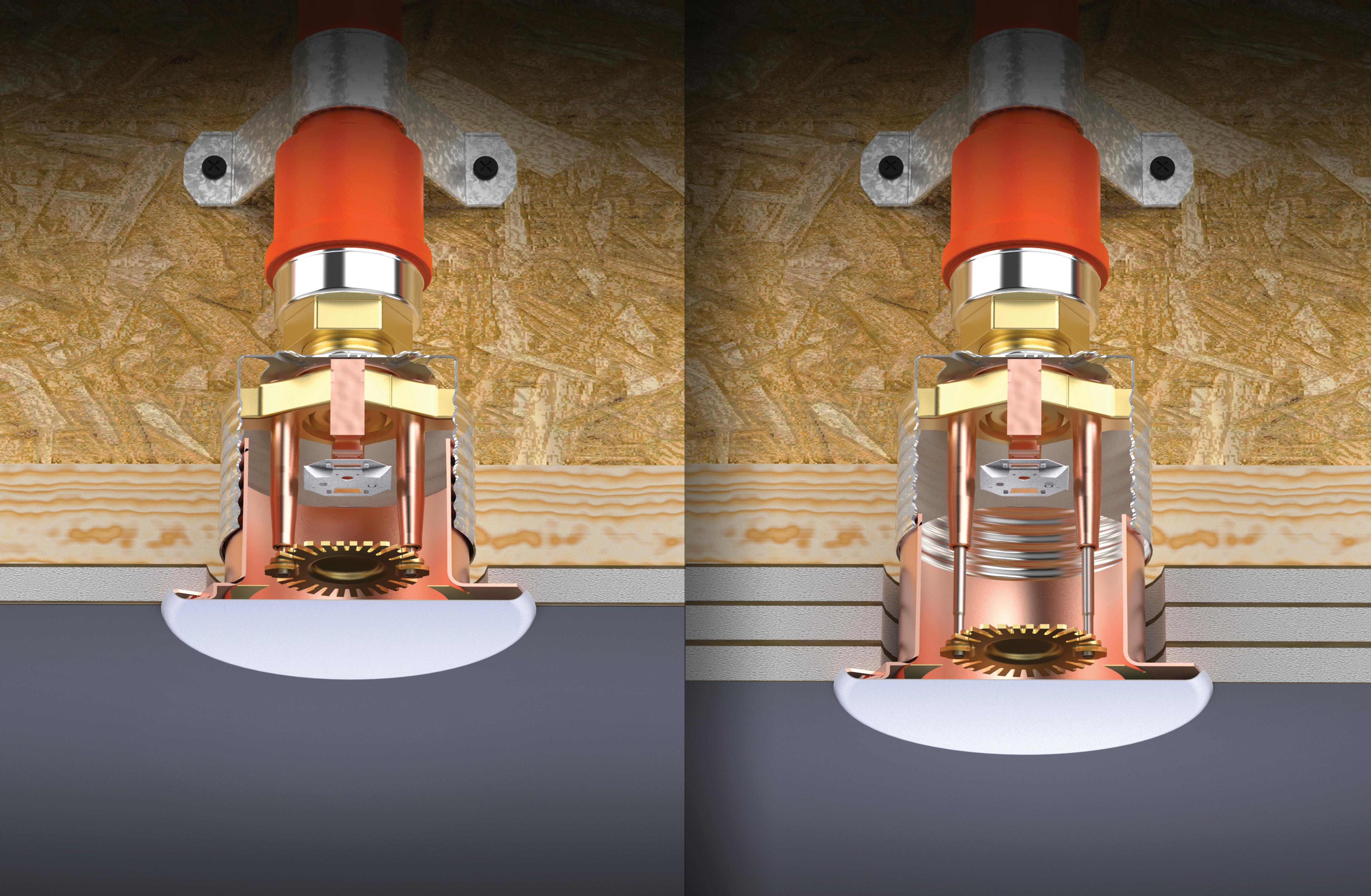


Appendix A of AFSA’s National Guideline Standards for apprenticeship of sprinkler fitters has been revised. This section of the standards details the Work Process Schedule and Related Instruction Outline. The main purpose of this update was to revise the Related Instruction Outline to correspond to the updated AFSA/NCCER Sprinkler Fitting series (fourth edition) now that all four levels are published and available.
In 2022, AFSA’s National Guideline Standards of Apprenticeship (NGS) for Sprinkler Fitters were approved by the Department of Labor (DOL). The Sprinkler Fitting series directly supports the educational requirements that are part of apprenticeship. Having the NGS registered helps AFSA members expedite the process of registering their own apprenticeship program.
This is also a great opportunity to discuss the two options now available with AFSA for supporting the education of apprentices on the path to becoming journeymen. The options are the Sprinkler Apprentice Curriculum or the Virtual Instruction Program (VIP). Either can help an apprentice achieve the education they need to support their career.
The sprinkler apprentice curriculum is the option AFSA has offered for many years. When a contractor purchases the course curriculum, their apprentice receives the sprinkler fitting book(s) that correspond to the level and are provided with assessments in the form of online exams. The updated sprinkler fitting series correlates with NFPA 13, Standard for the Installation of Sprinkler Systems, 2019 edition for Level 1 and Level 2. Level 3 and Level 4 correlate to the 2022 edition of NFPA 13. Supporting instruction for the education of apprentices remains with the employer as this option only includes the curriculum.
Assessments are now offered through Canvas, the learning management system (LMS) AFSA uses for education. For Level 1 and Level 2, there will be one exam per module. For Levels 3 and 4, the number of assessments will be reduced from those corresponding to the third edition of the textbooks, but for subjects that warrant it, there may be more than one exam per module. In
addition, the testing will be virtually proctored, which adds strength to the quality of the education program.
AFSA launched this training option early in 2023. The sprinkler fitting curriculum discussed in this article is the same updated subject matter, but it will be taught by AFSA.
Each level provides 10 months of education to accompany the On-The-Job Learning (OJL) conducted by the employer. The education includes the newly updated sprinkler fitting textbooks, two live sessions each month, performance tasks to reinforce the modules, self-study components, and assessments.
The live lessons are instructed by AFSA staff and subject matter experts. Each session runs for two hours and includes time for discussion. Lessons are offered twice on a single day to accommodate time zones and schedules. A calendar is provided with registration that contains specific dates and times. Participants are required to attend the live sessions.
Performance tasks are the execution of items that correspond to the lesson. This reinforcement increases the learning and retention of participants. The tasks are performed by the apprentice and verified by the supervisor (employer), who is designated during registration for VIP.
During the self-study portion, the apprentice is expected to read the accompanying sections that support the lesson and review any add-on resources, such as videos or articles, that have been provided. The text provides questions with each module to help guide the apprentice and ensure key concepts are absorbed, too.
Level 1 registration is now open for the next offering, which begins September 19, 2023. Level 2 registration is also available for its inaugural class that begins on February 7, 2024. If a student has completed the curriculum version of Level 1, they are still eligible to be registered for Level 2. Additional levels and sessions are being planned. For more details or to register, visit www.firesprinkler.org/sprinkler-apprentice-training or email training@firesprinkler.org. n
You need a partner who is ready to get to work when you are. Viking SupplyNet is everything you need in fire protection from one name. In addition to Viking’s leading line of products and services, Viking SupplyNet provides customers with products from top industry brands they know and trust.

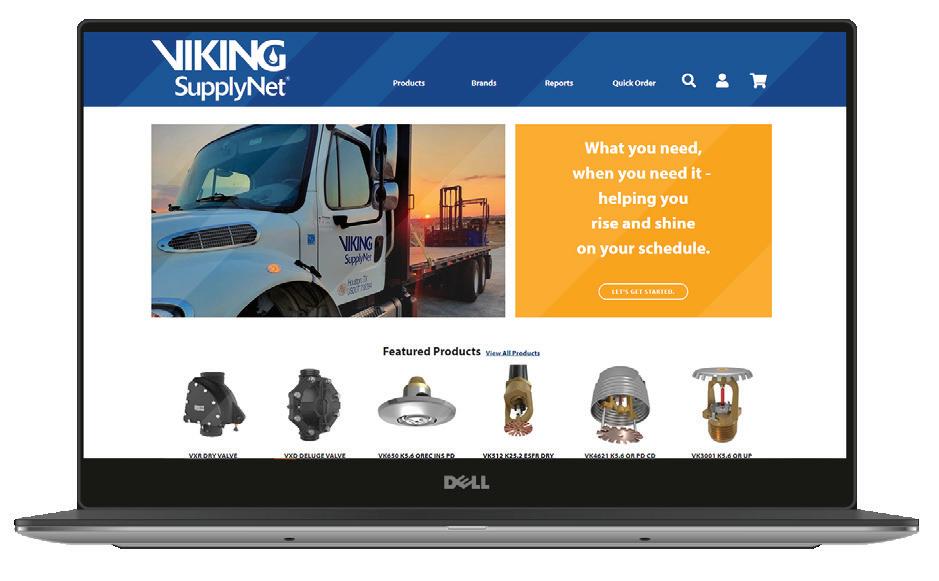

With locations across the United States and an increasing footprint, we offer customized delivery — getting exactly what is needed from the warehouse to the job site — so you’re ready to get to work on your schedule.

Learn more on our website at supplynet.com.

Sometimes five to nine is more realistic than nine to five.
We help you rise and shine, on your schedule.

In the fire sprinkler industry, auxiliary drains play a vital role in maintaining the effectiveness of dry and preaction systems. These drains allow the drainage of water and accumulated condensation from trapped sections of pipe, ensuring the system doesn’t freeze and is ready to respond in case of a fire. Per NFPA 13, Standard for the Installation of Sprinkler Systems , (2019 edition), auxiliary drains shall consist of two 1-in. valves connected by a 2-in. by 12-in. condensate nipple with a cap or plug. The two-valve design allows for draining while still maintaining proper system pressure.

16.10.5.3.5 Where the capacity of isolated trapped sections of system piping is more than 5 gal (20 L), the auxiliary drain shall consist of two 1 in. (25 mm) valves and one 2 in. × 12 in. (50 mm × 300 mm) condensate nipple or equivalent, accessibly located in accordance with Figure 16.10.5.3.5, or a device listed for this service.
Auxiliary drains are typically located at the lowest point in a trapped section of pipe. They can also be located at other points in the system, such as at changes of direction in the pipe or at the connection points of branch lines. The purpose of an auxiliary drain is to prevent water or moisture from accumulating in trapped sections of pipe. (See Figure 1.) This is important because water that is trapped in
a pipe can freeze and damage the pipe, trip the dry valve, and cause expensive repairs for the system and building. However, several challenges can impact the functionality of not only the auxiliary drains but the entire system. In this article, we will explore common problems faced by the fire sprinkler industry and present practical solutions that adhere to NFPA 13 2019 edition and NFPA 25, Standard for the Inspection, Testing, and Maintenance of Water-Based Fire Protection Systems, 2020 edition requirements, ultimately enhancing the efficiency of fire sprinkler systems.
PROBLEM: Lack of proper accessibility to auxiliary drains compromises maintenance. (See Figure 2.)
One of the primary requirements of NFPA 13 is unobstructed access to auxiliary drains.

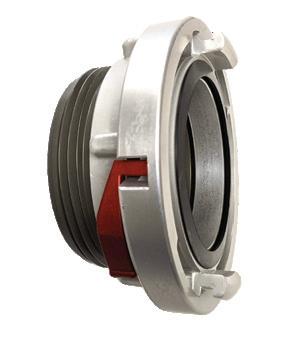
16.10.5.3.1 Auxiliary drains located in areas subject to freezing shall be accessible. Inadequate accessibility hinders maintenance, testing, and draining efforts, leading to delays and potential freezing and flooding complications.
SOLUTION: To ensure the optimal functionality of auxiliary drains, it is crucial to design and install systems with auxiliary drains that can be found, accessed, and drained often. As defined by code and appreciated by maintenance personnel, drains should not be over 7 ft (2.1 m) above the floor. Valves should also be able to be opened without interference and consideration should be given as to where the drained water will go so you don’t create a slip-and-fall hazard if the water turns into a frozen puddle.
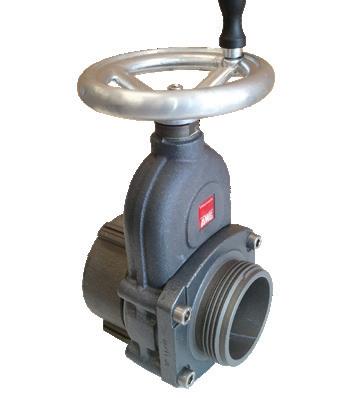

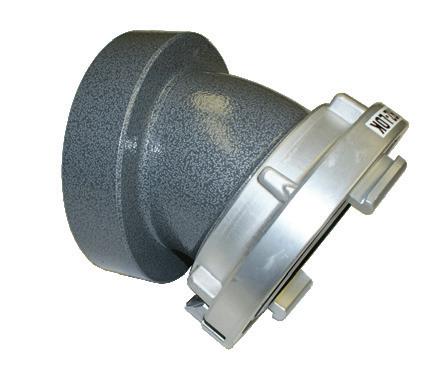
PROBLEM: Inadequate signage hampers the identification and mainte-
nance of auxiliary drains, causing delays and potential errors during maintenance. (See Figure 3.)
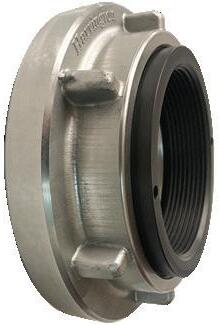
Another challenge associated with auxiliary drains is the lack of proper signage. Without clear signage, it becomes difficult for maintenance personnel to locate and service the drains effectively, potentially leading to errors or delays. Adequate signage is crucial for quick identification of auxiliary drains and needed to prevent mistakes that cause an accidental system trip. Not only does
NFPA 13 Section 16.9.12.1 require the drains to be labeled, but there is also an often-overlooked requirement for auxiliary drain signage at the dry valve.
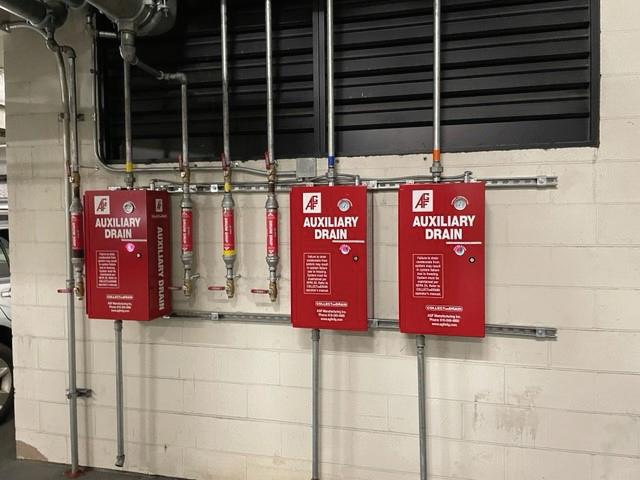
16.10.5.3.7 Systems with low point drains shall have a sign at the dry valve or preaction valve indicating the number of low point drains and the location of each individual drain.
SOLUTION: To overcome this challenge, incorporating preassembled auxiliary drains with integrated signage is an effective solution. These purpose-built

drains come equipped with visible and informative signage that clearly indicates the proper operation and provides an area to number and label the location of each drain. Furthermore, installation and maintenance can be expedited by the fitter having all the required auxiliary drain components without the need for field fabrication.
PROBLEM: Freezing temperatures can cause auxiliary drains to freeze and break, leading to flooding and water damage. (See Figure 4 on page 33.)
Several regions that are not accustomed to extended periods of freezing temperatures (e.g., Texas) have learned that cold weather poses a significant risk to the integrity of auxiliary drains. When exposed to freezing conditions the accumulated water in these drains turns to ice. As the water freezes and expands the auxiliary drain valve is susceptible to breaking, causing system pressure to drop and tripping the dry valve. Water then can freely flow out of the broken drain and potentially cause extensive damage to the facility. Such failures not only compromise the system’s performance but also result in costly repairs, operational and tenant disruptions.
According to NFPA 25, the property owner is ultimately responsible for the integrity of the fire sprinkler system even if inspection, testing, and maintenance (ITM) is being provided by an outside contractor.
– The property owner or designated representative shall be responsible for properly maintaining a water-based fire protection system.
If a property owner or facility manager defers all inspections and maintenance to the contractor, it is important to be able to identify issues to proactively address them before they become a system impairment or flood a facility.
SOLUTIONS: If the solution to this problem were simple, then frozen auxiliary drains wouldn’t occur multiple times each winter. Freezing requires several strategies to mitigate the risk and often involves several different individu -
als. A comprehensive and well-documented ITM plan that identifies and clearly defines the responsibilities of the property owner, the facility’s internal staff, and contracted ITM life safety professionals is a critical first step to avoid confusion and manage those responsibilities. To proactively manage auxiliary drains, they must not only inspect them but also drain them frequently. There are several options to help with this task. Heat tracing is one solution, but it can be expensive to install and operate, and difficult to maintain. Heated auxiliary drain cabinets, with manually operated drain valves or automatic drain valves are another option that will prevent freezing. Less expensive options include devices designed to prevent flooding; these devices can be installed into the piping system above an auxiliary drain, and they will stop the flow of water if a drain breaks.
PROBLEM: A dry or preaction system was tested or accidentally tripped and filled with water. The auxiliary drains need additional attention. (See Figure 5.)
To ensure the continued efficiency and performance of fire sprinkler systems, it is crucial to implement proper maintenance practices for auxiliary drains. NFPA 25, 2020 edition requires draining the auxiliary drains after each system opera-
tion, before the onset of freezing weather conditions, and thereafter as needed.
NFPA 25 – 13.4.5.3.2 Auxiliary drains in dry pipe sprinkler systems shall be drained after each operation of the system, before the onset of freezing weather conditions, and thereafter as needed.

Regular inspection and maintenance of the auxiliary drains are essential to keep the system free of water and ice. Like children, each system is different, and climate greatly affects the amount of condensation in a system and the maintenance requirements.
SOLUTION: A program for monitoring the condition of the system and the operation of the auxiliary drains should be instituted either by the facility personnel or contractor. By operating the auxiliary drains on a regular basis and conducting proper inspections, any accumulated water can be promptly drained, ensuring optimal functionality. As mentioned previously, communication with property owners is key to defining responsibilities.
PROBLEM: Access to auxiliary makes them easy targets for vandalism and mistakes. (See Figure 6.)
Yes, NFPA requires auxiliary drains to be accessible but sometimes this makes them accessible to the public in common areas. In facilities that serve alcohol and

have large crowds, like stadiums, it is inevitable for a patron to turn a valve while standing in the beer line (true story). Another common occurrence is when the summer help at the garden center mistakes the auxiliary drain for the water supply to give the plants a drink. Deliberate tampering or unauthorized interference can trip the system. Facility personnel will remove valve handles and make janky attempts to lock the valves. Unfortunately, this also makes the drain nearly impossible to perform any maintenance.
SOLUTION: In areas where vandalism is prevalent, additional measures are necessary to ensure system integrity. By securing an auxiliary drain with locks or tamper-proof mechanisms, the risk of damage and accidental system trip is significantly reduced but the drain must also be able to be serviced. Anti-trip plates are the ideal solution because they only allow one valve to be open at a time so a dry fire sprinkler system cannot be tripped by improper access or vandalism. They also don’t require any keys or locks
to perform maintenance, have integrated signage and provide an added layer of protection.
Auxiliary drains play a critical role in removing trapped water from dry and preaction systems. By addressing common challenges, such as the lack of signage, freezing and flooding, vandalism, freezing in troublesome locations, and maintenance requirements, fire safety professionals can ensure the optimal performance of these drains. Incorporating preassembled auxiliary drains with integrated signage, flood prevention devices, locking panels, and heated cabinets provides practical solutions that align with NFPA 13, 2019 edition requirements. By implementing these solutions and adhering to recommended maintenance practices, dry and preaction fire sprinkler systems can operate efficiently, protecting lives and property effectively in the event of a fire. n

ABOUT THE AUTHOR: Jim McHugh and his family have been deeply immersed in the fire sprinkler industry since the inception of AGF and the pioneering of the original Model 1000 TESTANDRAIN® valve over 35 years ago. Currently holding the position of President at AGF Manufacturing, Inc., McHugh bears the responsibility of spearheading the development, introduction, and production of specialized valves and distinctive products specifically tailored for the fire sprinkler industry. With an unwavering commitment to excellence, he actively participates as a member of esteemed organizations such as AFSA, ASPE, NFPA, NFSA, AND SFPE, leveraging his expertise to contribute to their mission. In addition, McHugh dedicates his time to serving on the Membership Committee and chair of the Suppliers and Manufacturers Council for NFSA and serving as a member of the Manufacturers/Suppliers Council for AFSA. As a fervent advocate of domestic manufacturing, he takes great pride in his role of serving the fire sprinkler industry and perpetuating the legacy of service established by his father, George McHugh III.
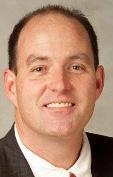





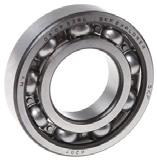

The AFSA Virginia Chapter recently completed a large-scale community service project as part of a private-public partnership with Henrico County Public Schools (HCPS) at the Regency Square Mall in Richmond, Virginia.
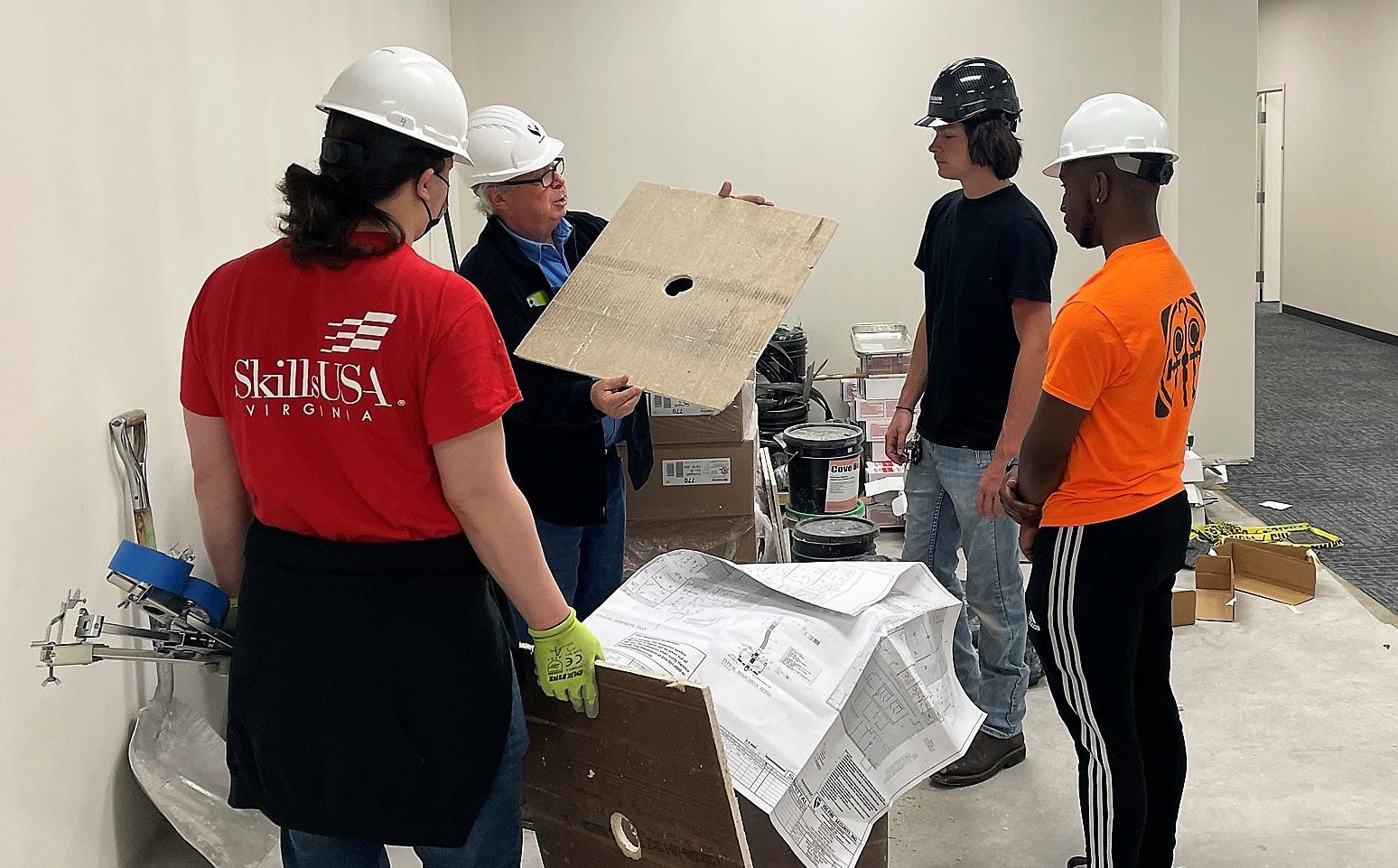
Late last year, the chapter board voted unanimously to move forward with performing the fire sprinkler work for HCPS at the Regency Square Mall. Two unnamed board members surveyed the project previously and convinced the board it was manageable with a little help from our members. Well, that little bit of help turned into four vendor members donating materials, three contractor members collaborating with design, and nine contractor members providing field installers to complete the work and meet critical project deadlines.
The project leadership team was spearheaded by Board Member Jason Gill with the assistance of Jeff Lewis and me. Time was of the essence to get moving quickly to meet critical project deadlines for HCPS. We had to get the plans submitted to the county for approval, get material committed, and figure out how to complete the field installation in two weeks or less. Jason immediately scolded Jeff and me for bringing such a massive and nearly impossible project to complete in such a short time frame for chapter members. He stated he would help us make this happen only if Jeff and I promised not to go out ever again and look at community service projects for the AFSA Virginia Chapter without proper adult supervision. With our heads down to avoid eye contact and fingers crossed behind our backs, we reluctantly agreed.
The scope of work for this project entailed tenant improvement work in over 26,809 ft2 of the lower level of the Regency Square Mall. The chapter’s contractor members needed to relocate 215 fire sprinkler heads using the new Victaulic VS2, 5.6k flexible connections that did not require hydraulic calculations, and add seven new fire sprinkler heads. A quick call to the local AHJ confirmed they would accept this new product, and the next task was to survey the existing two fire sprinkler zones that covered over 49,953 ft2.
It was the chapter’s intent to include the HCPS Career Technical Education (CTE) AutoCAD® and construction trade students to assist with the field survey, layout of fire sprinkler heads, and install the Victaulic flex heads. Jason provided the design field survey instruction for a full day of training the AutoCAD students on how to measure properly and mark the existing fire sprinkler heads on the reflected ceiling plan. The training was slow and arduous due to the limited number of hours the students were onsite, so Jason had to figure out solutions to get these plans finished. The clock was ticking!
At that point, the chapter Board requested an “all-hands-ondeck” from our contractor members, and did they respond to the call. Jason reached out to design manager Anthony McDaniel with ACI and Allen Mills of VSC Fire & Security to help with the field survey. ACI immediately sent their SWAT team of four designers and, along with VSC’s Allen Mills, completed the field survey in record time. Upon peer review by Jason, VSC Fire & Security submitted the fire sprinkler plans to Henrico County for review and approval. The design collaboration between chapter contractor members was a smashing success, with the fire sprinkler permit being issued with no comments in less than a week. A big thank you to the Henrico County fire plan review division for reviewing and approving the fire sprinkler plans in an expeditious manner and without fees. What teamwork!
Now with the approved Henrico County fire sprinkler permit in hand, the chapter needed to get the materials required to start the installation. A few emails were sent, and phone calls were made to chapter vendor members, and they immediately stepped up without hesitating to provide all of the materials, some tools, and safety gear for the entire project. The Victaulic Corporation donated all 215 flex connections with fire sprinkler heads needed to complete the project and t-shirts for the high school students; The Hajoca Corporation provided all cast iron fittings, steel pipe, nipples, Teflon tape, and any call-ins required; Ferguson Fab and Fire provided safety gear, t-shirts, 55-gallon trash cans for draining the system and other call-in materials; and Reliable Automatic Sprinkler Company provided two Sure-Off Testers so we didn’t have any accidental mishaps. Many thanks to a fantastic group of chapter vendor members for helping make this pipe dream community service project start to become a reality.
It is now showtime! Put up or shut up, as they say! Time to round up contractor members to perform the field installation and hydrostatic testing to be witnessed by the AHJ. Chapter contractor members responded not only with a “Yes,” but a resounding “Hell, yes! What can we do to help complete this project?” There was still a major obstacle to overcome before the installation started, and that was draining down the two zones in a timely manner. One fire sprinkler zone was severely trapped and took over six hours to drain down, and the other zone had low-point drains in several areas. Jason contacted the mall management and asked if they would perform a fire watch to enable us to complete this project within the two-week deadline. They agreed, and we started scheduling contractor members to start the field installation.
Jason called contractor member Checkmark Services on a Sunday evening to see if they could come out sometime that week, and they responded immediately and said they could have a crew there first thing Monday morning to start draining down the two zones. Starting Monday morning, the CTE students started cutting ceiling tiles right away, and contractor members were off installing the flexible hose connections, adjusting the fire sprinkler heads in the tiles, and installing the escutcheon plates. Once the systems were drained down, the chapter contractor members answered the call to tie the flex hoses into the sprinkler system, and the crews were scheduled throughout the next two weeks. The field installation was completed in 11 working days, including inspections—tremendous coordination and teamwork by all contractor members to complete this massive project so quickly. There were nine chapter contractor members that participated in completing an efficient, professional, and timely tenant improvement project. The hydrostatic tests and visual inspections by the AHJ passed for both phases with a very minimal punch list. The project was finished within the time frame required by the HCPS system, and the adult education classes started on time.
The chapter board would like to express our appreciation and gratitude for all volunteers that participated in the HCPS Regency Square Mall community service project. Partnering with the HCPS’s Career Technical Education program has allowed the chapter to have exposure to over 600 students who are coming out of these programs with OSHA 10 certifications, CAD training, various trade training, and other certifications that make them a great source of entry-level hiring. Our goal is to inform high school students about the great career opportunities in the fire life safety industry and get talented job applicants for our members. Over the last two years, contractor members have hired seven to eight HCPS CTE students. We expect to bring the number to 20-30 as we continue to maintain and grow this relationship by adding other school systems in the area. HCPS allowed the chapter to set up a career fair at the mall last April, and they brought in over 200 students to meet with 11 chapter members and talk about entrylevel careers, from welding with the vendors to CAD designers, field installers, and service techs for the contractors.
Additionally, the HCPS system has given us a display case at the mall to advertise fire sprinkler, fire alarm, ITM, and designer jobs for participating in this project. All members will have a QR code with their company logos with access to their websites or contact information for potential applicants. HCPS has also
offered to allow the chapter to use the facility for future chapter meetings at no charge and have the Culinary Arts CTE students prepare lunch for the members. The chapter has also recorded two podcasts with HCPS, talking about fire life safety careers and one video of high school students installing the Victaulic flex heads for this project after only 30 minutes of training. This relationship will lead to enlightening CTE students about the many career opportunities offered by chapter members and eventually hiring many well-qualified graduates from this program.
The chapter was nominated by HCPS and received a Business Honor Roll Award and recognition from the Virginia School Boards Association for supporting the Regency Mall project. This prestigious award will be hung in the chapter’s display case at the mall.
Lastly, excuse Jeff and me as we go off searching for another “piece-of-cake” community service project. Please don’t tell Jason! n
THANK YOU!
This project would not have been possible without the generous donations of materials, manpower, and talent from the following AFSA Virginia Chapter members:
VENDORS
Victaulic Corporation – Chris Pickford, Bryan Waddell, and Woody Witczak
Hajoca Corporation – Shawn Walls
Ferguson Fire and Fab – Craig Smith
Reliable Corporation – Josh Shapiro
DESIGNERS
ACI – Spencer Hill, James Underwood, Austin Walker, and Angelina Yuille
Crews and Gregory – Jason Gill
VSC Fire & Security – Allen Mills
FIELD INSTALLTION
ACI – Lewis Hoffer, Jr., Lisandro Romero, Adam Tramer, and Dereck Zane
American Fire Systems – Manuel Arana, Santos Ordonez, Oscar Rodriguez, Joe Saffer, and Mark Taylor
Cavalier Fire Protection – Bob Beckwith
Checkmark Services – Gregory Badget, Ty Butler, Christopher Nichols, James Suggs, and John Stanley

Crews and Gregory – Jason Gill
Old Dominion Fire Company – Griff Brinkley and Brandon Shearin
Professional Fire – Mike Chafin, Danny Miles, and Mike Mimms
Summit Fire and Security – William Burton, David Hill, Aaron Jackson, Cody McLarn, Ryan Schroeder, and Mohamed Sesay
VSC Fire & Security – Jeff Lewis
Valves utilized in fire protection systems play a critical role in preventing and controlling fires, ensuring the safety of occupants, and minimizing property damage. Valves were actually responsible for controlling water into perforated pipe networks in the 1800s. These specialized valves are key components of fire suppression systems, providing reliable and efficient water flow regulation. There are various types of valves for many applications, and they are all crucial for effective fire protection.
Valves are vital pieces of equipment to the fire sprinkler industry and act as control devices to regulate water flow and distribution throughout water-based fire protection systems. These valves are strategically installed throughout a building to ensure that water is readily available to control and suppress fires in emergency situations and to provide proper maintenance. Effective waterflow control allows fire sprinkler systems, standpipes, hydrants, and fire pumps to operate effectively to control, suppress, and extinguish a fire in an efficient manner.
Water-based fire protection systems typically incorporate various types of valves, each designed to fulfill specific functions. For explanation, the typical valves that are found in sprinkler systems will be broken into categories: main control valves, alarm valves, and auxiliary valves.

Main control valves are utilized to provide water to systems and isolate systems or portions of the system for maintenance or adjustments. These valves are referred to as listed indicating valves in NFPA 13, Standard for the Installation of Sprinkler Systems, 2022 edition. Indicating valves allow anyone in the vicinity of the valve to recognize its status. NFPA 13 states:
16.9.3.2 Listed Indicating Valves. Unless the requirements of Sections 16.9.3.2.1, 16.9.3.2.2, or 16.9.3.2.3 are met, all valves controlling connections to water supplies and to supply pipes to sprinklers shall be listed indicating valves.
16.9.3.2.1 A listed underground gate valve equipped with a listed indicator post shall be permitted.
16.9.3.2.2 A listed water control valve assembly with a reliable position indication connected to a remote supervisory station shall be permitted.
16.9.3.2.3 A nonindicating valve, such as an underground gate valve with approved roadway box, complete with T-wrench, and where accepted by the authority having jurisdiction, shall be permitted. Indicating valves provide an external visual indication that the valve is in the open or closed position. According to the NFPA Fire Protection Research Foundation article, “U.S. Experience with Sprinklers,” October 2021 edition, 57 percent of sprinkler system failures between 2015 and 2019 were due to the system being shut off and 18 percent were due to manual intervention defeating the system. Unfortunately, these statistics do not tend to vary much edition to edition. Both major causes involve a control valve, and it is important to be able to visually note that the sprinkler system or water supply is in the open position. The most commonly listed control valves are the butterfly, outside screw and yoke (OS&Y), post indicator, and curb box valves. Butterfly and OS&Y valves are true indicating types.
These valves utilize a rotating disc to control water flow. A handle typically manipulates gears that turn the internal disc. They are often used as the main control valves in wet, dry, deluge, preaction, standpipe, and
fire pump systems. An indicator is built on the face of the valve to show the position of the interior rotating disc. Butterfly valves tend to be the most convenient in terms of cost, ease of installation, and maintenance. However, the rotating disc is located within the waterway and impacts both turbulence and friction loss within the piping (Figure 1).
These valves are a type of gate valve. A screw that is manipulated by a handle is connected to a gate that enters the waterway. Since the screw controls the gate, the valve is observed as closed when the screw is near flush to the handle and open when it is exposed. The screw should be exposed approximately the distance of the nominal size of the valve to be considered fully open. OS&Y valves are used as main control valves in wet, dry, deluge, preaction, underground, standpipe, and fire pump systems. These valves are less likely to impact turbulence and friction loss within
the piping as the gate exits the waterflow stream. For this reason, they are commonly found in backflow prevention assemblies and the suction piping of fire pumps. These valves have larger valve bodies than butterfly valves, making them more difficult to install. In addition, because the mechanical screw of the valve is exposed, they tend to require more maintenance (Figure 2).

PIVS
PIVs are commonly used to segment an underground or large-diameter supply mains to provide a means of isolation if the system requires work. These valves are a type of gate valve with a shaft connection that allows the operating nut to be away from the valve (aboveground or outside of a building). The assembly provides a visual indication placard that reads “OPEN” or “SHUT” through a transparent protection window. The indicating placard moves as the connection shaft is adjusted. As the placard is connected to the shaft and not directly to the valve, this valve is not considered an indicating valve as defined by NFPA 13. The window commonly becomes blurry with sediment and the placard is often dislodged. The operating wrench is typically attached to the body of the valve with a lock or key (for emergency operation). PIVs can be horizontally mounted to a wall or vertically installed to control the flow through underground pipe (Figure 3).
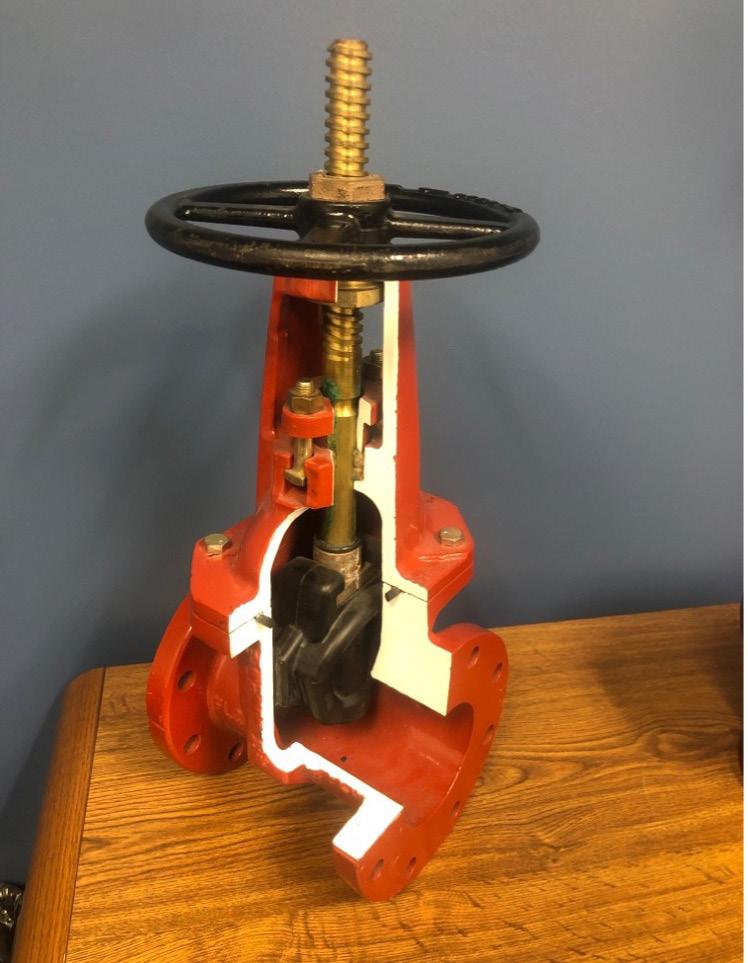
Curb box valves are used to segment portions of the underground piping. The operating nut is below grade under a curb box and operated by a T-wrench (Figure 4).

Listed indicating and nonindicating valves are indispensable components of water-based fire protection systems, and ensuring that these life-saving systems operate effectively in the event of a fire is key. As an industry, it is our responsibility to know how these valves work; where they are required; and how to properly install, inspect, test, and maintain them in order to reduce fire losses and ultimately decrease the loss of life and property. n

ABOUT THE AUTHOR: Joshua McDonald, MSET, CFPS, CWBSP, WBITM, is AFSA’s manager of engineering and technical services. He received his Bachelor and Master of Science degrees from OSU. He is a member of NFPA and SFPE.
• Hot tap up to 4" valves on steel, galvanized, copper, brass or PVC pipe.
• Pressure rated 300 psi max for chilled and hot water systems; 15 psi max for steam systems.
• Order with or without hole saws.
TOLCO solutions are designed to help speed install and reduce complexity while providing safe, reliable solutions to help protect critical systems
This past spring the Home Fire Sprinkler Coalition (HFSC) and the NFPA Fire Sprinkler Initiative united the fire service, fire sprinkler industry, and other safety advocates in the sixth annual Home Fire Sprinkler Week campaign (HFSW). With their participation and outreach, more than 1.6 million people throughout North America were reached with lifesaving information and resources.
UL listed as a restraint for lateral bracing and FM approved as a sway brace attachment. Eaton.com/Fig-74.



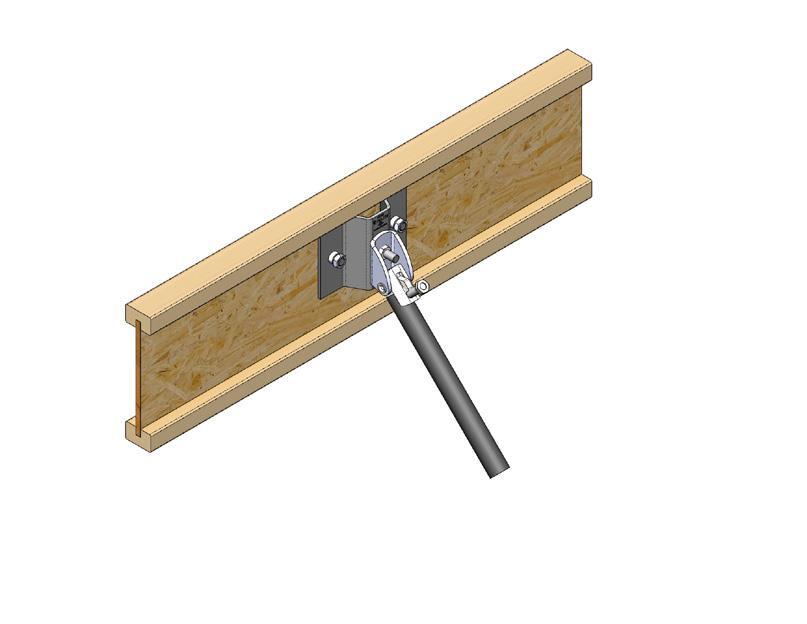
Free to download and simple to use. Create complete submittal package for fire sprinkler systems. Eaton.com/tolbrace


The campaign, held the week of May 14, focused on the home fire problem and the need for better understanding of the life safety benefits of installed home fire sprinklers. HFSC developed a dedicated webpage for the week, featuring a different theme for each day along with suggested videos, graphics and sample text. This made it easy for visitors to choose turnkey messaging and post it directly on their websites and social media channels.
“Each year, the campaign picks up more momentum,” says HFSC President and NFPA Vice President of Outreach and Advocacy, Lorraine Carli. “Six years ago, we focused on community outreach and live demonstrations. During the pandemic shutdown, we tapped into widespread fire service reliance on digital technology. Today we have the ideal educational hybrid, with an increase in both in-person community events and internet and social media messages,” she said. “While some fire departments are equipped to do both, others have the resources only to promote the events
and our important safety messages through their social media channels. Every activity moved the needle on community risk reduction, including those departments that worked with their local media to share home fire sprinkler stories.”
During the week, 4,670 people visited the website and shared the content on social media platforms including Facebook, Instagram and Twitter, initially reaching 1,652,185 people. More than 13,000 people visited HFSC’s YouTube channel during HFSW. These visitors viewed 605 hours of HFSC’s home fire sprinkler educational videos. One of the most viewed was a new video produced using home security camera footage capturing a house fire in Millers Falls, Massachusetts. HFSC’s YouTube channel pairs this real-life example of how a fire can become deadly in less than three minutes with interior videos of a living room fire with and without installed sprinklers.
In addition to the successful digital messaging component (which continues to attract online viewers), many fire departments conducted community outreach events during the week. HFSC awarded $500 stipends to 20 fire departments to support their grassroots safety education activities. The stipends were used to conduct live fire and sprinkler demonstrations, produce educational banners, purchase monitors to show educational videos and to boost social media messages. Some fire departments purchased virtual reality headsets or 3D glasses so their community members could experience HFSC’s virtual reality home fire and sprinkler videos.
Many fire departments built home fire sprinkler displays. In addition to their stipend, display recipients received a free RiserPACK bundled by AGF Manufacturing with components donated by Potter, Viking and Watts. AGF’s RiserPACK includes all the NFPA 13D system elements. Whether they keep the display at the station or take it on the road, visitors can see an actual riser, pipes and sprinklers, learn

how they are installed and understand how they work. The NFPA 13D displays have been used to educate homeowners, decision makers, water providers, builders and developers, helping dispel myths and confusion about home fire sprinklers.

ABOUT THE AUTHOR: Peg Paul is the founder/president of Peg Paul & Associates (PPA), a marketing communications firm that specializes in fire and life safety education and awareness programs. Paul has been the communications manager for HFSC since 1997, where she oversees the development and implementation of educational programs for members of the fire service, local officials, consumers, home building industry, real estate
and insurance agents, water purveyors, and other targeted groups. Paul and her team have secured more than $10 million in Federal and corporate foundation grants. Paul serves on the board of the NFPA Research Foundation, International Association of Fire Chiefs Fire & Life Safety Section. She served on the Phoenix Society for Burn Survivors Board of Directors for 10 years. Paul is the 2023 recipient of the CFSI/ IFSTA Dr. Anne W. Phillips Award for Leadership in Fire Safety Education. She was recognized in 2014 as AFSA’s Fire Sprinkler Advocate of the Year.

On April 27, 2023, the Virginia Chapter of the American Fire Sprinkler Association (AFSA) hosted its second annual career fair with the Henrico County Schools System’s Adult Workforce Development Center at the Regency Square Mall. This event attracted six chapter contractor members and four vendor members. All participated in this unique industry-specific event, looking to hire apprentice field installers, trainee service techs, welders, and junior AutoCAD® designers. This year, the event attracted 200 Henrico County high school students from nine high schools. Henrico County is home to the sixth largest school system in Virginia, with nine high schools and three Advanced Career Education Centers (ACE).

The chapter promoted the career fair through a flyer that members created and distributed to Henrico County’s high schools. The event was held from 10:00 a.m.-1:30 p.m. for high school students and from 4:00 p.m.-7:00 p.m. for ACE students. Bus transportation was provided. Chapter members appealed to Gen Z’s desire for a purpose-driven career with wording on the flyer, including, “Saving lives and protecting property from fire is more than a fire department occupation. Come and learn about the fire sprinkler, fire extinguisher, and fire alarm and detection industry!” Teachers and parents were also welcome to attend the open-housestyle event.

One of the things that makes the career fair so distinctive is the hands-on immersive nature of it. Students were treated to working AutoCAD and Revit stations, working fire alarm panels, tools, and items related to the fire sprinkler trade. There was even a computer set up to allow students to use a portable fire extinguisher. This year, members were able to provide two virtual reality (VR) experiences. The first was provided by Viking and its excellent VR training program and staff. The second was provided by AFSA National and the Home Fire Sprinkler Coalition (HFSC), which allowed participants to view the benefits of home fire sprinklers in 3D using their cell phones and the YouTube app. Students were also exposed to AFSA’s apprenticeship training, ITM training, and NICET certifications available for design, ITM, special hazards, and fire alarm fields.
All of this is a product of last year’s career fair, which Mac Beaton, director of Career & Technical Education, and Beverly Cocke, coordinator of Workforce & Career Development for Henrico County attended. They liked what they saw and wanted the chapter to bring all the career opportunities available through
the membership directly to the students of Henrico County. They provided a perfect location for it and 200 eager CTE students, did all the coordinating with the Henrico County School System, and delivered big time.
An event like this provides value to our chapter’s membership in a couple of different ways. The first being is that we were able to introduce chapter members to a new and virtually untapped potential workforce. The second being one of education. Two hundred students and their teachers were exposed to an industry that they almost all had never heard of before. Gen Z is looking for meaning in the work they perform. With a mission as great as ours, we should be able to attract top talent from these CTE programs. n
The American Fire Sprinkler Association (AFSA) is pleased to announce a strategic partnership and “members-only program” with Service First Processing (SFP) and Mass Marketing Insurance Consultants, Inc. (MMIC). These businesses offer timely and cost-savings solutions for members’ needs. These businesses and other AFSA partners can be found on the AFSA website, firesprinkler.org, by logging in as an AFSA member, then clicking on “Member Services” and “Member Discounts.”
“We are pleased to offer these business partnerships to assist our members,” says AFSA Senior Director of Membership & Chapter Development Meda Merritt. “AFSA strives to meet our members’ needs and help them succeed.”
As experts in health insurance, Mass Marketing Insurance Consultants, Inc. (MMIC) is capable of offering the broadest range of insuring companies, policies, and plans. MMIC has absolutely no ties or obligations to any one insurance company. Therefore, they are free to represent AFSA members without any restrictions. They will analyze members’ needs and provide impartial, objective advice with a view to improving coverage and reducing costs. MMIC offers both individual and group health insurance plans.
Below are health insurance options for employer groups who want a health plan with effective dates of September, October, and November 2023.
• Traditional Fully Insured Group PPO, HMO, HSA Insurance Plans: Group Health coverage is guaranteed to your employees (preexisting conditions are covered), and benefits payable are unlimited. A company can start or transfer a Group Health Insurance Plan at any time throughout the year since the Open Enrollment Period does not apply to fully-insured plans. National networks of providers are available.
• Level-Funded Group Health Insurance Program: This plan, available to employer groups of two to 50 employees, behaves like a traditional, fully insured health benefit plan. The employer provides a flat monthly premium payment determined upfront and guaranteed not to increase for a full year as long as there are no changes to your group benefits or enrollments. The monthly premium is used to:
1) Run the administration of your plan.
2) Pay your stop-loss insurance premium (protects your plan from larger-than-expected claims).
3) Build your claims account (when claims are lower than expected, a portion of the difference is credited back to you).
This Level-Funded option provides quality healthcare benefits to your employees at a lower cost. Options such as dental, vision, and life insurance can be added to the medical coverage.
To obtain a no-cost, no-obligation quote for any of the above group health insurance options, submit your information using your mobile phone by going to mmicinsurance.com, clicking “Menu,” and then clicking “How to Receive A Quote.” AFSA members may also email quotes@mmicinsurance.com, or call toll-free 1-800-349-1039.
Service First Processing (SFP) is a leading payment processing provider helping merchants navigate the constant changes in the bank card industry while keeping costs low, ensuring data security, and enhancing efficiency by making it simple to run transactions. SFP offers AFSA members credit card and ACH/check processing services at a special discount off its regular rates. In addition, AFSA members receive these benefits:
• AFSA members receive annual 10-percent rebates on the net processing revenue SFP generates from their accounts.
• Free loaner equipment.
• Free enhanced online reporting.
• Dedicated helpline with live customer service.
• Sixty-day trial period/90-day pilot program for members new to credit card acceptance.
The average savings for contractors is a 15-percent reduction in processing costs before annual rebates. Additionally, AFSA members have access to a suite of electronic payment tools to help streamline their businesses.
• Accounts Payable Automation: Manage all invoice payments in an easier, more cost-effective way while receiving rebates.
• ACH tools facilitate quick ACH and e-check services to suit your organization’s needs.
• With online invoicing, you can easily create custom invoices directly online.
Call (855) 632-9862 to receive a savings proposal consultative analysis. n
The second draft meetings for NFPA 13 have just wrapped up, and the technical committees will vote on second revisions in the coming weeks. There are several significant changes and topics to discuss, but before that, one of our outgoing representatives is deserving of special recognition.
James “Jim” Fantauzzi, president of North East Fire Protection Systems, Ballston Spa, New York, has been involved with AFSA for over 30 years. During his time with the association, Jim served as a member of the Technical Advisory Council (TAC) starting in 1985, chairing the council for six years. He also served as an AFSA Board member for six years in the early 1990s.
Jim has served the industry as a member of the NFPA 25 Technical Committee since its inception in 1990. Beginning in 2016, Jim has represented AFSA on the NFPA 13 Technical Committee on sprinkler system discharge criteria (AUT-SSD) and recently completed his final revision cycle. We are grateful to Jim for his time and dedication to AFSA and our industry. AFSA needs more volunteers like Jim to represent our association on NFPA technical committees.


Second revisions require a two-thirds majority vote to make it into the standard; otherwise, a failed second revision turns into a committee comment. Committee comments could be brought back through a notice of an intent to make a motion (NITMAM) and a certified amending motion (CAM) by any member of NFPA, and any rejected public comment is also able to come back through a NITMAM/CAM when the motion is made by the submitter of the public comment. Once a CAM is published, the proposal will be debated and voted upon by the entire membership of NFPA at the annual technical meeting.
Listed Air Compressors—Probably the most essential component of a dry sprinkler system is the air supply, but historically, an air compressor was the one component that did not have to be listed. During the second draft meeting, a requirement to use listed air compressors was added to the standard with the option of utilizing non-listed air compressors for temporary use. Many were not familiar with the UL standard on air compressors, nor that the standard has specific requirements for air compressors for fire protection use. Listed air compressors are tested for durability and reliability through cycle testing that far exceeds that of a typical compressor from a hardware store. In addition, the listing will require manufacturers to provide the necessary data to determine fill time, maximum capacity, and whether an air maintenance device is required.
In addition to listing air compressors, the entire section on dry pipe systems was reorganized to create a more user-friendly document. AFSA specifically worked on cleaning up the requirements for inspector’s test connections, making sure it was clear that a single orifice connection is always permitted and has a
60-second delivery time requirement — unless certain volume limits are met — and the table for multiple orifice manifolds is permitted to be used for listed water delivery time calculation software or physical manifolds built in the field.
Sloped Ceilings for Storage—Based on recent data from an NFPA Fire Protection Research Foundation project, sprinklers can be installed in storage occupancies with sloped ceilings up to a 4 in 12 pitch. During the first draft phase, there were several options added that allowed the designer/layout technician to take advantage of obstructed construction and channeling of heat and smoke to protect storage occupancies with sloped ceilings. For the second draft, the only major cleanup that occurred was that the rules for sloped ceilings in non-storage occupancies were returned to the 2022 edition language.
To adequately convey these new requirements, users of NFPA 13 will see a few new terms defined in Chapter 3. Those terms include “blocking,” “non-solid obstructions,” and “non-flat obstructions.” The term “blocking” was added to differentiate between firestopping. Blocking involves compartmentalizing beam channels with building materials that will stay in place during sprinkler operation to slow the spread of heat and smoke from a fire
AFSA representatives were very effective in moving supported proposals in the standard. Of the 45 public comments AFSA submitted, 36 resulted in second revisions, and a few received clarifying rejection statements that equally solved an issue. Overall, 85 percent of supported proposals resulted in second revisions, and 70 percent of opposed proposals were rejected. These statistics are very promising and encouraging, especially having only two votes on the committee.
AFSA will reconstitute its TAC in 2024 to establish association positions on changes proposed in the standard development process. The reformation of TAC can only bolster our efforts and success. If you are interested in learning more about TAC, attend our information session at AFSA42 in Orlando. n
AFSA’s Engineering & Technical Services Department staff present technical challenges here for you and your co-workers. These exercises are also excellent preparation for professional certification tests and may count as CEUs. Check with your certification organization. Answers to this issue’s questions will be presented in the next issue.
The following questions are based on NFPA 25, Standard for the Inspection, Testing, and Maintenance of Water-Based Fire Protection Systems, 2023 edition.
1. True or False? NFPA 25 requires the inspector to verify the adequacy of the system design and installation. False Often referred to as the “wear and tear” document, the intent of NFPA 25 is to verify the operational readiness of systems that have been properly installed per the applicable standards. Per NFPA 25-2023, Section 1.1.3.1, this standard does not require the inspector to verify the adequacy of the system design or installation.
2. Which of the following must be inspected every week?
A. Sprinklers
B. Reduced-pressure backflow assembly
C. Fire Department Connections
D. Waterflow alarm devices
NFPA 25-2023, Section 13.7.1.1, requires that reduced-pressure assemblies and reduced-pressure detector assemblies be inspected weekly to ensure that the differential-sensing valve relief port is not continuously discharging.
3. Which of the following is true regarding sprinkler testing?
A. If one sprinkler within a sample fails to meet the test requirement, all sprinklers within the area represented by that sample must be replaced.
B. Sprinklers do not require testing unless they begin to lose fluid from the thermal element.
C. Dry sprinklers must be tested or replaced every 10 years.
D. All sprinkler types have the same testing requirements. Where one sprinkler within a representative sample fails to meet the test requirement, all sprinklers within the area represented by that sample must be replaced (NFPA 25-2023, Section 5.3.1.3).
4. Which of the following locations would most likely require sprinkler testing/replacement every five years?
A. High-volume distribution warehouse
B. Cold storage warehouse
C. Saltwater marina
D. Patient care area in a hospital
NFPA 25-2023, Section 5.3.1.1.2 states that sprinklers installed for five years in harsh environments, including corrosive atmospheres, must either be replaced or tested using a representative sample every five years. For listed corrosion-resistant sprinklers, NFPA 25-2023, Section 5.3.1.1.3 extends the period to 10 years.
5. How long must you operate the pump during a weekly diesel-driven pump churn test?
A. 10 minutes
C. 60 minutes
B. 30 minutes
D. 90 minutes
Per NFPA 25-2023, Section 8.3.2.4, the diesel pump must run for a minimum of 30 minutes. This allows the system to come up to operating temperature and gives the inspector sufficient time to observe proper operation of system components as well as pump issues that may develop over the runtime, such as overheating, excessive weeping, or unusual noises/vibration.
The following questions are based on NFPA 13, Standard for the Installation of Sprinkler Systems, 2022 edition.
1. What term is defined as “a water control valve that is held in the closed position by the system gas pressure exposed to the surface area on the air/nitrogen side of the clapper where such surface area is larger than the surface area on the water supply, with an intermediate chamber between the two surface areas that is open to atmosphere”?
A. Dry pipe valve
B. Mechanical deluge valve
C. Differential dry pipe valve
D. Mechanical dry pipe valve
2. What statement is correct for a 4-in. incoming riser check assembly?
A. The main drain valve size shall be 2 in.
B. The main drain valve size shall be 11/2 in. or larger.
C. The main drain valve size shall be 2 in. or larger.
D. The main drain valve size shall be based on the incoming static pressure. For static pressure less than or equal to 100 psi, a 2-in. valve is required. For static pressure over 100 psi, a 21/2-in. valve is required.
3. Listed indicating control valves shall not close less than _________ when operated at maximum possible speed from the fully open position?
A. 5 seconds
C. 30 seconds
B. 15 seconds
D. 60 seconds
4. Check valves shall be installed with flow in what direction?
A. In the vertical up or horizontal position in accordance with their listing.
B. In any direction their listing allows.
C. Any direction as long as the check valve incorporates a spring in the clapper assembly.
D. Only in the vertical up position in accordance with their listing.
5. A water control valve is defined as a valve that activates to allow water flow to a water-based fire protection system. Which of the following are examples of these valves?
A. Deluge, preaction, and dry
C. Preaction, dry, and control
B. Deluge, dry, and control
D. Deluge, preaction, check, dry, and control
OCTOBER 2023
9
• AFSA ITM Inspector Development Program Fall 2023 Kick-Off Dallas, TX
9-20
• Intermediate Design School
www.firesprinkler.org/calendarevent/intermediate-firesprinkler-system-planning-school-3
The American Fire Sprinkler Association (AFSA) is pleased to announce that Eric Andresen has joined the association as a technical training specialist, and April Stives has joined the association as membership sales specialist.
11
• AFSA Tennessee Chapter Training
NFPA 14 & NFPA 25
Chattanooga, TX
www.firesprinkler.org/calendarevent/tennessee-chaptertraining-3
14
• Sprinkler Types & Characteristics (CAL FIRE) Online Webinar www.firesprinkler.org/calendarevent/sprinkler-typescharacteristics-cal-fire
17-11/10
• Beginning Design School
www.firesprinkler.org/programs/beginning-fire-sprinklersystem-planning-school
23-25
• Hands-On Course for ITM of Water-Based Fire Protection Systems
Exton, PA
www.firesprinkler.org/programs/nfpa-25-hands-on-itm
NOVEMBER 2023
1
• Proposed Updates to NFPA 20 Online Webinar www.firesprinkler.org/calendarevent/proposed-updates-tonfpa-20
13
• Training Course for ASSE 15010 Certiication
Exton, PA
www.firesprinkler.org/calendarevent/training-course-for-asse15010-certification
Seminars subject to change. Call (214) 349-5965 to confirm locations and times. For more events and details, visit firesprinkler.org and click on “Events” and “Events List.”
Andresen holds a bachelor’s degree in fire protection and safety technology from Oklahoma State University. In his role as technical training specialist, Andresen helps create, plan, and run training programs for the association, primarily focusing on the inspection, testing, and maintenance (ITM) of water-based fire protection systems. He is the primary instructor for AFSA’s ITM Inspector Development Program and supports other services and training programs, as needed, within the Engineering and Technical Services Department, such as Technical Reviews and ITM Connection.

“Eric’s education and experience will be a benefit to our members by bringing that knowledge to our in-person training classes and online courses,” says John A. Denhardt, P.E., FSFPE, vice president of AFSA’s Engineering and Technical Services Department. “In addition, he is very personable and eager to learn, making him a great fit for our team at AFSA. Our members are going to enjoy working with Eric!”
In her role as membership sales specialist, Stives will assist with membership recruitment and retention efforts and provide service to current members.

“April plays an intricate role on our membership team,” says AFSA Senior Director of Membership & Chapter Development Meda Merritt. “She is responsible for ensuring our members make the most of the membership by educating them on the advantages of being an AFSA member and assisting them with accessing their benefits.”
AFSA appreciates its members! Beginning January 1, 2024, AFSA will be implementing an annual three-percent dues increase. The increase will ensure that AFSA can continue to provide high-quality training and educational programs. If members have any questions, please contact AFSA’s membership department at membership@firesprinkler. org. AFSA values the ongoing support of its members and looks forward to working with them for years to come!
Sign up to receive your own free copy of Sprinkler Age magazine— print, digital, or both! Qualified industry professionals can sign up for a free subscription online at sprinklerage.com/subscribe. For more information or to view the digital edition, visit sprinklerage.com. n
In July, AFSA’s DFW Chapter met at AFSA headquarters in Richardson, Texas. Attendees were able to tour the new office space, view the newly constructed lab underway, as well as engage in discussion about member benefits and improving market share. AFSA’s Bob Caputo, CFPS, Josh McDonald, MSET, CFPS, CWBSP, WBITM and Meda Merritt led this chapter event. For more information, email chapters@firesprinkler.org.
In June, AFSA’s Florida Chapter held AHJ training at the City of Tamarac Fire Rescue Station #15 just outside of Miami. AFSA’s John A. Denhardt, P.E., FSFPE and Reliable Automatic Sprinkler Co., Inc.’s George Nicola instructed at this two-day event. Visit afsafl.org.
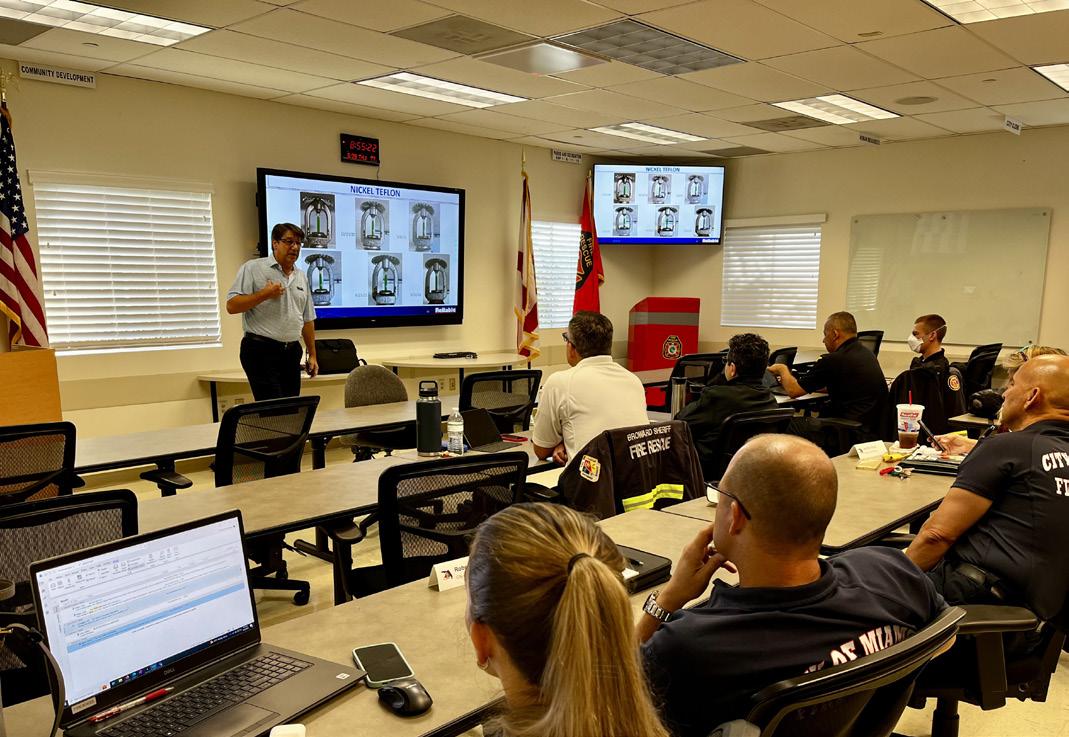
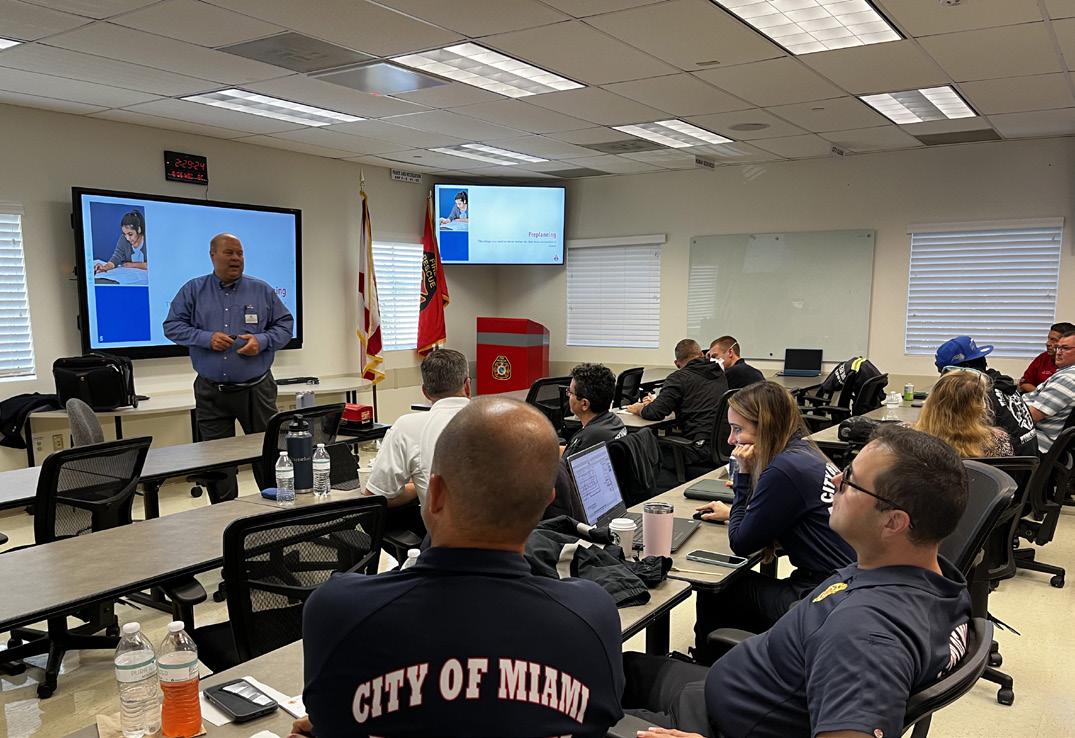
AFSA’s Louisiana Chapter will hold its 16th Annual Golf Tournament on October 16, 2023. Mark your calendars, fill out your form, and get excited for an amazing day on the links. Registration will open at 7:30 a.m. and the shotgun start will begin at 8:30 a.m. All proceeds will benefit the Oschner LSU Health Burn Center as well as Camp “I’m Still Me” serving the state of Louisiana. Share with your friends and business associates—all are welcome to play! For more information, contact Chapter Executive Director Ellen Ballard at EBallard@firetechsystems.com or visit lafiresprinkler.org.
AFSA’s Tennessee Chapter will hold a full day of training presented by AFSA Vice President of Technical Services & Engineering John A. Denhardt, P.E., FSFPE on October 11. The training will consist of two four-hour seminars: one on “Keeping up with NFPA 25” and the other on “Keeping up with NFPA 14.” This chapter training will be held at the Tennessee Aquarium in Chattanooga. For more information, visit afsatn.org.
The 2023 AFSA Virginia Chapter/Burn Survivors Foundation Golf Tournament will be an exciting 30th-anniversary event with two days of celebration and fun! Tuesday, October 10, 2023, will include a wine and beer tasting, dinner, and casino play at the DoubleTree Hotel in Williamsburg. The golf tournament will be held Wednesday, October 11, 2023, at the Williamsburg National Golf Club. For more information abou the event, visit virginiaafsa.org.
If you are interested in donating to the Burn Survivors Foundation or would like to learn more about the charities this event serves, please visit burnsurvivorsfoundation.org. n
The 34th Annual FSCATX Scottish Rite Charity Golf Tournament at Trophy Club Country Club will be held on October 9 in Trophy Club. This event helps raise awareness and support for Scottish Rite Children’s Hospital. FSCATX consistently raises around $70,000 in donations, and while each year looks different, they hope for another great turnout. Visit fscatx.org. n
ALABAMA
Lee Seewald – Pres. 202-252-5101
Greg Willis – Exec. Dir. 334-567-4257
ARIZONA
Jason Williams – Chair 480-421-8411
ARKANSAS
Dennis Morrall – Chair 901-734-4796
Coleman Farrar – Exec. Dir. 479-461-3863
CAROLINAS
Jason Graham – Chair 919-533-2356
John Turnage – Exec. Dir. 919-624-3456
CHESAPEAKE BAY
Jason Martin – Chair 410-286-3314
Danielle Fowler – Exec. Dir. 410-972-1122
COLORADO
Roger Wallace – Chair 719-337-6550
Kim Cook – Exec. Dir. 704-213-4368
DALLASFORT WORTH
CJ Bonczyk – Chair 817-529-1693
FLORIDA
Bob DiModica - Chair 239-514-7155
Jessica Cox – Exec. Dir. 813-784-3624
GEORGIA
Allen Cagle – Chair 770-554-5285
Taylor Johnson – Exec. Dir. 770-484-1112
GREATER BAY AREA

Dave Karrick – Chair 925-417-5550
Alicia Karrick – Exec. Dir. 510-398-9185
GREATER KANSAS
CITY
Mark McKenzie – Chair
913-432-6688
Brett Heinrich – Exec. Dir. 785-825-7710
ILLINOIS-INDIANA
Skyler Bilbo – Chair
217-342-2242
Mitch Bortner – Vice Chair 206-348-0078
LOUISIANA
Randy Laguna – Chair
504-464-6236 ext 224
Ellen Ballard – Exec. Dir. 318-688-8800
MICHIGAN
Doug Irvine, Jr. – Chair 616-784-1644
MINNESOTADAKOTAS
Marc Huag – Chair
701-232-7008
Tina Hoff – Exec. Dir. 701-709-1899
OKLAHOMA AFFILIATE ofsa.info
Tim Hollon – Pres. 918-851-2416
TEXAS AFFILIATE fscatx.org
David Stone – Pres. 713-466-9898
Sarah Kiefer – Exec. Dir. 512-844-6632
NEW ENGLAND
Lisa DiRienzo – Chair
508-298-2134
John DiRienzo – Exec. Dir.
NEW JERSEY
Thomas Bowlby, Jr. – Chair 908-226-5313
Victor Lugo – Exec. Dir. 201-635-0400
NEW MEXICO
Paul Chavez – Chair 505-898-9197
Jeriod Towery – Vice Chair 505-410-4007
OHIO
Scott Huber – Exec. Dir. 513-942-1500
PACIFIC NORTHWEST
Chris Russell – Chair
360-734-4940
Ron Greenman – Exec. Dir. 253-576-9700
SACRAMENTO VALLEY
Jordan Hopkins – Chair
Paulene Norwood – Exec. Dir. 916-296-0635
SAN DIEGO
Mark Scott – Chair 619-778-2377
Rhonda Gudger – Exec. Dir. 951-326-4600
SCHUYLKILL
Christopher Campion, Jr. –Chair 732-798-0911
Meaghen Wills – Exec. Dir. 610-754-7836
SOUTH CAROLINA
Nikki Ray – Chair 864-207-8545
Ashley McAdams – Exec. Dir. 864-561-4088
SOUTHERN CALIFORNIA
Jeff Bridges – Chair 941-413-0526
Vahe Zohrabian – Exec. Dir., Treasurer 818-822-1797
TENNESSEE
Casey Milhorn – Chair 615-349-5278
David Pulliam– Exec. Dir. 901-484-0605
UPSTATE NEW YORK
Justin Petcosky – Chair 607-296-7969
UTAH ROCKY MOUNTAIN
Mark Winder, Jr. – Chair 385-630-8064
Brent Heiner – Exec. Dir. 801-544-0363
VIRGINIA
Bob Beckwith – Chair 540-659-4675
Steve McGee – Exec. Dir. 757-544-0520
New members as of August 10, 2023
All American Fire Sprinklers, Inc., Zephyrhills, FL
All In One Fire, Inc., Doral, FL
All Star Fire, Inc., Leesburg, FL
Apex Fire Systems, Inc., Irvine, CA
Crisco Fire Protection, Inc., Sylmar, CA
Fire Protection Service, Houston, TX
Fire Sprinkler Guy, Loxahatchee, FL
HCT, LLC, Mandeville, LA
J.T. Fire & Safety, LLC, Somerville, NJ
Maui Plumbing, Inc., Kahului, HI
S & B Fire Protection, Inc., Nampa, ID
WATECH Waldemar Jóskowiak, Swarzędz, Poland
GTP Software, Larkspur, CO
Pumptec, Anoka, MN
Shandong Luyuan Fire Technology Co., Ltd., Weifang, China
Shanghai Vision Mechanical Joint Co., Ltd., Shanghai, China
Damianich & Sons, Ramos Mejia, Buenos Aires, Argentina
AHJS
Hossein Atef-Vahid, Commerce, CA
James Baker, Greenville, SC
Stephanie Bames, Los Gatos, CA
Barbie Barnett, Bullhead City, AZ
Alyssa Barstow, Frisco, TX
Morrell Blissett, McKinney, TX
Michael Blunt, Hampton, VA
Long Bui, Dallas, TX
Alan Campbell, Greensburg, IN
Chris Cieslarczyk, Charleston, SC
Jennifer Duncan, Rockville, MD
Aaron Eddings, Land O’ Lakes, FL
Eric Eubanks, Greenville, SC
Richard Everett, McKinney, TX
Edward Ferraioli, Hawthorne, NJ
Rick Fluegge, Charleston, SC
Dillon Garris, Lancaster, SC
Joshua Goodson, Franklin, TN
Meredith Haltom, Lewisville, TX
David Hardwick, Johns Island, SC
Jenna Hirao, Irvine, CA
Andrew Holmes, Grass Valley, CA
Anthony Huemann, Glenview, IL
Richard Johnson, Port Everglades, FL
Troy Jordan, McKinney, TX
Christopher Jueseekul, Los Gatos, CA
Michael Julazadeh, Charleston, SC
La Vona Koretke, Escondido, CA
Nichole Lamb, Charleston, SC
Douglas Lichnovsky, McKinney, TX
Blake Makishima, Los Gatos, CA
Andrew McCarra, Annapolis, MD
David Medina, Santa Paula, CA
Teri Merritt, Irvine, CA
Kelly Metz, Towson, MD
Andrew Miller, Irvine, CA
Duane Miller, Bentonville, AR
Larry Moore, Wahiawa, HI
Zara Mosavat, Los Angeles, CA
John Myers, Orangeburg, CA
Jesse Navin, Maple Grove, MN
Scott Pieri, Dallas, TX
George Puerto, Greenville, SC
Marcus Ramos, McKinney, TX
Zack Schmidt, San Marcos, CA
Jay Stinson, McKinney, TX
Brandon Stolp, Santa Rosa, CA
Jason Swanson, Sarver, PA
Toby Taylor, Columbia, SC
Huong Tran, Los Gatos, CA
Janice Van Mullem, Huntington Beach, CA
Mark Wang, Monterey Park, CA
LaTonya Webster, Dallas, TX
Brian Weidman, Long Beach, CA
Gary West, Chapmansboro, TN
Kyle White, Fort Lauderdale, FL
Tracy Williams, Cottleville, MO
Teddy Wolfe, Orangeburg, SC
SPOTS ARE LIMITED SO REGISTER TODAY
Oct. 17 - Nov. 10 | Dallas, TX - Hybrid
Redesigned for a hybrid approach, with six live webinars offered the first week, followed by a week of in-person instruction. Students will study the installation & design approach requirements of NFPA 13 (2019), prepare system layout drawings, and perform hydraulic calculations by hand.
October 9 - 20 | Dallas, TX
Experienced layout technicians will find this blended learning course useful to understand the tools they utilize in-depth and gain a deeper knowledge of layouts for standpipe systems, fire pumps, seismic protection, and the design requirements for general storage.

Fayette Pipe Co. has appointed Scott Smith as its national sales manager. He will oversee the company’s sales operations, develop and implement strategic sales initiatives, and nurture key customer relationships in the fire protection, HVAC, and plumbing markets.

Smith has 40 years of experience in sales, marketing, and distribution within the plumbing and HVAC/R industries with Leran Copper and Brass Co., Cambridge Lee Industries LLC, Curtis Marketing LLC, and most recently at Sunbelt Marketing, Inc. as the Midwest regional manager. Visit fayettepipe.com.

Fire protection expert and Telgian Engineering & Consulting President Leonard Ramo, P.E. was recently appointed to the University of Maryland Department of Fire Protection Engineering board of visitors (BOV). The BOV is instrumental to the success of the department by helping it gain both recognition and support as a leader in FPE research and education. In addition, its members serve as liaisons to industry and government as well as other academic institutions.
As a BOV member, Ramo brings significant industry experience to the table. His career spans nearly three decades as a practicing fire protection engineer, consultant, and executive. His professional accreditations include registration as a Professional Engineer (P.E.) in all 50 U.S. states, District of Columbia, and select territories, as well as a P. Eng. in select Canadian provinces. In addition, Ramo is a Certified Fire Protection Specialist (CFPS) and holds a U.S. Department of Homeland Security CVI certification. Visit telgian.com.
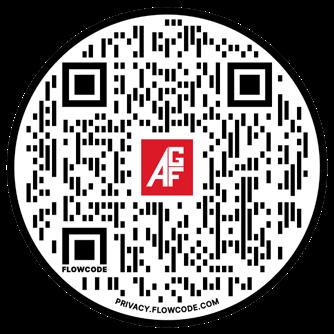

The National Fire Protection Association® (NFPA®) and the Fire Protection Research Foundation have announced the winners of the Fire Protection Research Foundation Medal and the Harry C. Bigglestone Award. The awards were presented at the 2023 Stars at Night awards gala.
The Fire Protection Research Foundation Medal, an award that recognizes a project that best embodies the fire safety mission, commitment to tackling technical challenges, and collaboration on project execution, has been awarded to a team of fire and life safety experts for their project “Firefighting Foams: A Fire Service Roadmap.” The project, which was funded by a DHS/FEMA Assistance to Firefighters Grant, was designed to assist the fire service as it transitions to fluorine-free firefighting foam. The recipients of the 2023 Fire Protection Research Foundation Medal are Jerry Back, Casey Grant, and Edward Hawthorne.
The Harry C. Bigglestone Award is given annually to the paper appearing in Fire Technology that best represents excellence in the communication of fire protection concepts. The award is accompanied by a $5,000 prize from NFPA. For their paper, “Experimental Study of the Fire Dynamics in a Semi-enclosure Formed by Photovoltaic (PV) Installations on Flat Roof Constructions,” the winners are Jens Kristensen, Ph.D.; Benjamin Jacobs; and Grunde Jomaas. Visit nfpa.org. n
The National Fire Protection Association® (NFPA®) has released a new report, “Fatal Firefighter Injuries in the U.S. in 2022,” which showed a total of 96 on-duty U.S. firefighter fatalities in 2022. Of these deaths, 51 were volunteer firefighters, 38 were career firefighters, six were contractors for federal or state land management agencies, and one was a full-time federal land management employee.
The number of injury and cardiac-related fatalities in 2022 is higher than past years, largely due to the inclusion of deaths occurring within 24 hours of duty, which were previously not counted in the report unless there was a specific physical complaint while on duty. The report now includes fatal injuries and cardiac deaths that occurred within 24 hours of duty, irrespective of manifested or reported symptoms. However, an unknown number of deaths due to unspecified medical causes in 2022 were likely cardiac related, so the reported number of cardiac deaths likely continues to understate the true total.
The report categorizes the type of duty that firefighters were engaged in when the deaths occurred, including deaths that occurred: on the fireground; at a non-fire emergency; responding to or returning from emergency calls; and during training.
Trauma injuries accounted for 33 firefighter deaths. In addition, six multiple fatality incidents occurred in 2022, tying for the highest number of multiple fatality incidents since 2009. Just over one-fifth of firefighter deaths (21) occurred while responding to or returning from emergencies. The report also showed that overexertion and stress accounted for just over one-half of the deaths in 2022. Of the 49 deaths in this category: 34 were sudden cardiac incidents and one was due to cardiac symptoms; 11 deaths included an unspecified medical cause; one was due to a stroke or aneurysm; and two deaths were the result of drug overdoses.
According to the report, excluding the 340 firefighter deaths that occurred on 9/11, the highest fatal injury total was 174 firefighter deaths in 1978 and the lowest was 48 deaths in 2019. This overall downward trend is an
encouraging indication that firefighter injury prevention and health and wellness efforts through the years are being met with success. At the same time, the data shows that work as a firefighter includes significant physical demands, taking place in environments that involve a range of hazardous conditions and presenting risks not only at fire scenes, but during training activities, non-fire emergencies, and transport to and from emergency scenes.
This firefighter fatal Injuries study is made possible by the cooperation and assistance of the United States fire service, CDC’s National Institute for Occupational Safety and Health, the United States Fire Administration, the Forest Service of the U.S. Department of Agriculture, and the Bureau of Indian Affairs and the Bureau of Land Management of the U.S. Department of the Interior. Visit nfpa.org.
The Society of Fire Protection Engineers (SFPE) announces the opening of registration for the SFPE Annual Conference & Expo. Held at the Bethesda North Marriott Conference Center in Washington, D.C./Bethesda, Maryland, from October 8-10, the SFPE Conference & Expo is the place where fire protection engineers and fire safety professionals come together to learn, network, engage, and be inspired.
The conference will feature 65-plus presentations structured around the topics of building design, energy storage, fire-safety and waterbased systems, sustainability, fire service, engineering strategies in the wildland urban interface, and much more. The opening keynote will feature James Milke, Ph.D., P.E., FSFPE, discussing changes to the profession of fire protection engineering, and Charles Bailey, division chief of fire and rescue operations in Montgomery County, discussing how changes in the built environment impact fire department performance. Additional general sessions include the topics of automatic storage and retrieval systems, smoke detection in high-ceiling spaces, fire safety science research, and highlights of the forthcoming SFPE Handbook of Fire Protection Engineering. A panel discussion on the integration of sustainable technologies, poster presentations, a series of rapid-fire IGNITE ses-
sions, and sessions specifically curated on SFPE Foundation initiatives will also be featured. A total of 14.25 hours of professional development credits are available.
SFPE will also host four seminars prior to and immediately following the conference. These seminars require an additional registration fee and are open to both conference attendees and those not attending.
Make plans to join your peers as the global fire protection and fire safety engineering community convenes at the SFPE Annual Conference & Expo. Discounted registration is available through Tuesday, August 29. To learn more and to register, visit sfpe.org/annual23.

Allegiant Fire Protection received a warm, windy welcome from the Valparaiso, Indiana, business community as it held a grand opening for its second location at 3505 Redbow Drive, Suite A. Members of the Valparaiso and Crossroads Chambers, along with individual business owners, chatted and congratulated Allegiant Fire Protection President Mike Carli and Allegiant Vice President Jill Nottke as they learned more about the company and its services while enjoying some barbecued offerings. As part of the official welcome, The Valparaiso Chamber held a ribbon-cutting ceremony. Robert Lane, CEO of Endeavor Fire Protection, which Allegiant is a subsidiary company, also attended the event.
Founded in 2018 in Aurora, Illinois, the company offers expert technicians and support staff who specialize in fire protection system inspections and maintenance, as well as fire alarm system design, installation, service, and repair, and 24/7 monitoring for its industrial, commercial, and residential clients.
Allegiant’s new Valparaiso site, which will offer the same services as the company’s Illinois location, is home to a 5,000-ft2 space and a neighbor to the Porter County Regional Airport. Visit allegiantfire.net.


The SFPE Foundation, a charitable organization focused on enhancing the scientific understanding of fire and its interaction with the social, natural, and built environments, is soliciting public comment on four papers focused on strategic cooperation in research and education to advance fire engineering.
The four papers were published in July 2023 as part of the SFPE Foundation Grand Challenges Initiative. Now, the SFPE Foundation is soliciting comments from the public on four ten-year plans for strategic cooperation in research and education to advance fire engineering on the topics of Climate Change; Digitalization, Artificial Intelligence, and Cybersecurity; Energy and Infrastructure; and Resilience and Sustainability. The papers can be downloaded from sfpe.org/foundation; all comments are requested by October 31, 2023.
To facilitate broad community participation and comments, the SFPE Foundation hosted a series of free virtual Grand Challenges Initiative meetings on July 25, 27, and August 2-3, 2023, to provide additional insight into the research, education, and outreach priorities identified in the papers, with on-demand viewing of the meetings to follow. The SFPE Foundation will also be sharing updates and soliciting feedback in person at the SFPE Annual Conference & Expo in Washington, D.C./Bethesda, and at the SFPE Engineering Solutions Symposium for Fire Safety and Sustainable Building Design in Ljubljana, Slovenia.
The SFPE Foundation launched the Grand Challenges Initiative in 2022 to prioritize the pressing global challenges where fire safety science and engineering can contribute to ongoing discussions that affect the daily lives of billions. These four papers, and the entirety of work on the Grand Challenges Initiative, are led by experts serving on four working groups and made possible with the financial support of SFPE, Fire Safety Research Institute/UL Research Institutes, Code Red Consultants, FM Global, Harrington Group, Jensen Hughes, and additional corporate, academic, and research partners. Visit sfpe.org/foundation.
RIDGID®, a part of Emerson’s professional tools portfolio, and its employees donated more than 400 food and personal care items, including vegetables, canned goods, box meals, pasta and soup to Elyria’s Pioneer Freedge as part of a donation drive sponsored by Mosaic, an Emerson employee resource group focused on serving the community, celebrating diversity and creating an inclusive work environment for people working away from their home location.
The Freedge, located at the Elyria Public Library South Branch, is a place where people can leave surplus food items for others to take, reducing food waste and promoting community connections. It operates on the principle of “take what you need, leave what you can.”
The group last collected school supplies to provide Elyria school students with needed supplies to kick off the new school year. The group has also participated in several community service activities with Leaders of Today, a local organization helping the youth of Lorain County. Visit RIDGID.com. n
VAPOR PHASE CORROSION INHIBITOR
General Air Products introduces the Vapor phase Corrosion Inhibitor (or VpCI®) to the fire sprinkler system industry with their latest corrosion prevention product, the Vapor Pipe Shield. VpCI® might be new to the fire protection industry, but it is a triedand-true technology that’s been used for decades to protect and extend the shelf life of many familiar metal products, including metallic car parts, oil pipelines, steel bridge cables, and even infused with concrete to protect rebar in building projects. Now, by way of the Vapor Pipe Shield, this technology will be able to protect dry and pre-action sprinkler systems from damaging corrosion.
The Vapor Pipe Shield is a patented and UL Listed delivery system of VpCI piped directly in-line between the air compressor and dry pipe valve. With no electrical to hook up, this completely mechanical process makes Vapor Pipe Shield as easy to install as an Air Maintenance Device. Once installed, the VpCI molecules are dispersed throughout the piping using the airflow provided by the dry or preaction system and then adsorb to the metal surface of the piping system. Once there, these molecules form a one-molecule thick barrier—or protective shield—on the metal that repels corrosive elements from contacting the pipe directly, stopping corrosion in its tracks. And because VpCI molecules can also penetrate any standing water in the piping network, it doesn’t matter how much oxygen or moisture is in the sprinkler system—oxygen and moisture are rendered irrelevant.
The Vapor Pipe Shield makes corrosion mitigation and prevention in any dry or pre-action sprinkler system simple, efficient, and highly cost-effective. Visit generalairproducts.com.
Following on the recent introduction of AFCON seismic sway braces—the AFCON®
AF700SS Universal Swivel Attachment and AF730SS

Longitudinal and Lateral Sway Brace Attachment—ASC
Engineered Solutions now offers the AFCON AF735 Bear Trap™ multi-size lateral sway brace attachment. It has been designed for quick and easy installation, taking only half the time of traditional lateral brace attachments.
The AF735 is designed to work with 1-in. through 2-in. brace pipe. Out of the box, it works with 1-in. or 11 4-in. brace pipe and with a quick adjustment, it will work with 11⁄2-in. or 2-in. brace pipe. The Bear Trap sway brace provides a reduction in inventory and increased flexibility on the jobsite for adjustments while providing visual verification of both torque and installation.
This product is both UL Listed and FM Approved and ready for incorporation into a seismic bracing system design. Using Seis Brace 2.0, ASC’s free seismic fire protection calculation software, enables spacing maximization and a reduction in material and labor costs while ensuring NFPA 13 code compliance. AF735 is also compliant with ASCE 7, IBC, & MSS SP-127 bracing requirements. Visit asc-es.com.

RIDGID®, part of Emerson’s professional tools portfolio, expands the capabilities of its RP 241 Compact Press Tool with the addition of RLS® Press Jaws for HVACR applications. Designed to press 1 4-in. to 1 3⁄8-in. copper, the Jaws, when paired with the RP 241 improve productivity by cutting installation time up to 60 percent compared to traditional connection methods.
The Jaws, designed for use with RLS fittings, were developed in partnership with RLS creators of the first press-to-connect fitting systems for high-pressure HVACR projects. Their fittings are fully registered and listed to UL207 for pressures up to 700psi.

The latest tool in the RIDGID Compact Press Tool family, the RP 241 has a low-profile design that is lightweight and balanced. It also features an ergonomic design to help users
easily work in tight spaces. Bluetooth® connectivity connects the tool to the RIDGID Link® app, which allows users to track the number of cycles, battery information, and much more.
Along with RLS Jaws, the RP 241 is compatible with all RIDGID Compact Series jaws, rings, and actuators and can press up to 11⁄4 in. (32 mm) on copper and stainless steel; up to 11 2 in. (40 mm) on PEX tubing; and up to 1-in. (25-mm) carbon steel.
All RIDGID press tools come with a full limited lifetime warranty, and RLS fittings are backed by a 15-year limited warranty. Visit RIDGID.com. n











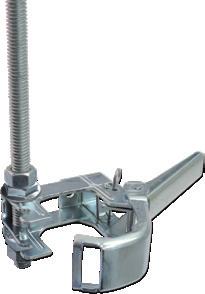

AFSA delivers classroom instruction. Letting you focus on field training.
Expert instruction and support
Convenient format: AFSA meets apprentices wherever they are


Flexible schedule
Visual aids to enforce learning
Online testing accessible 24/7
